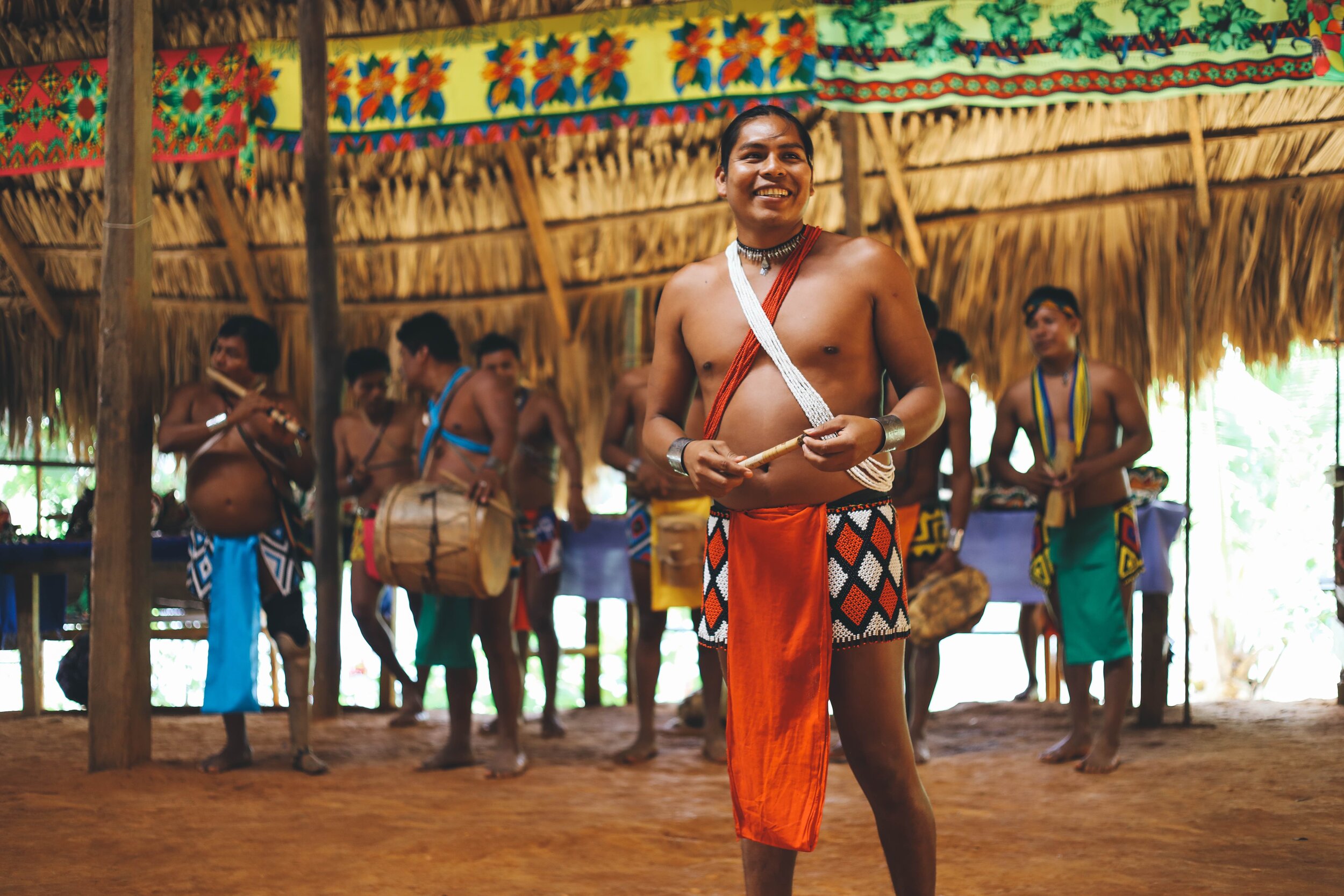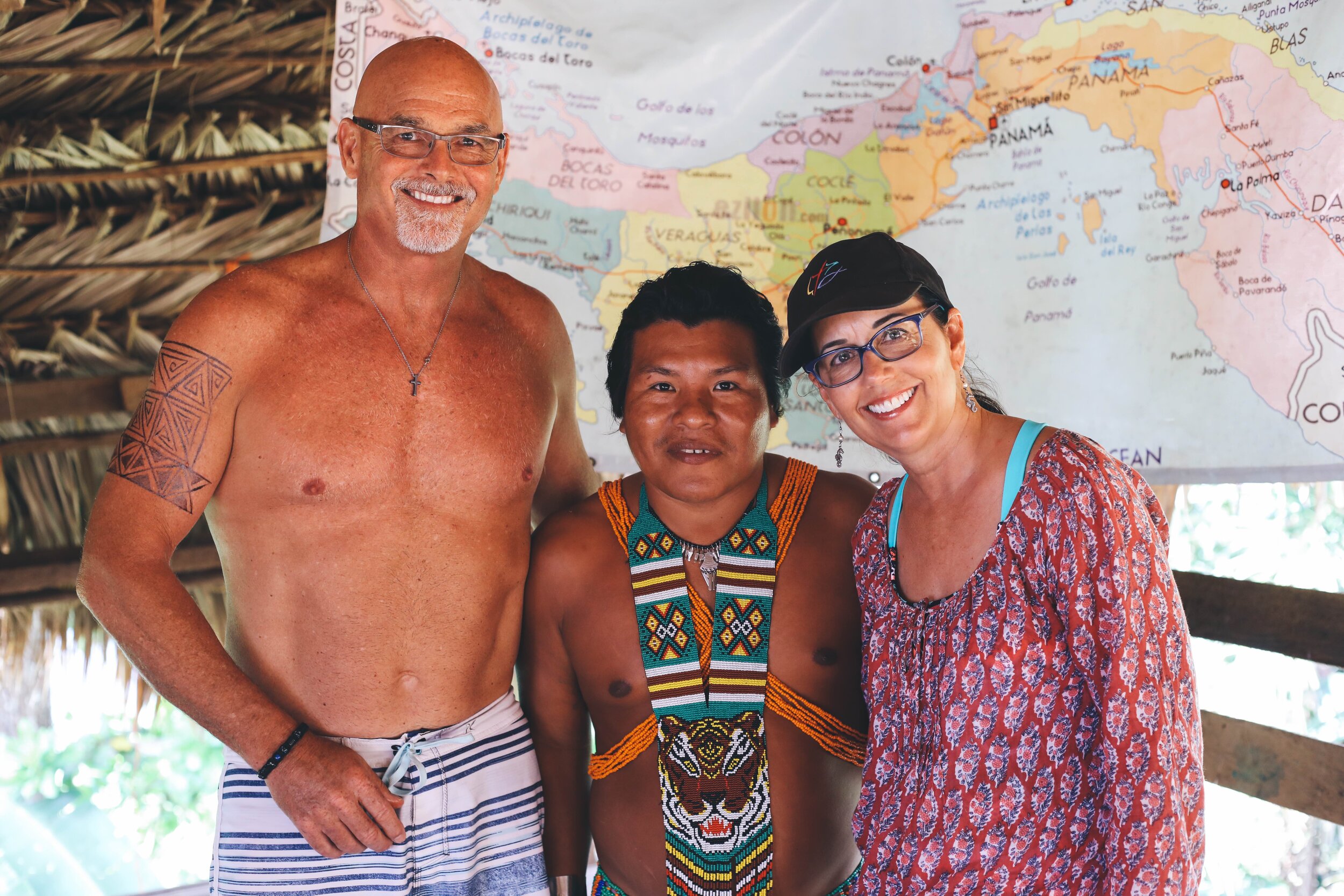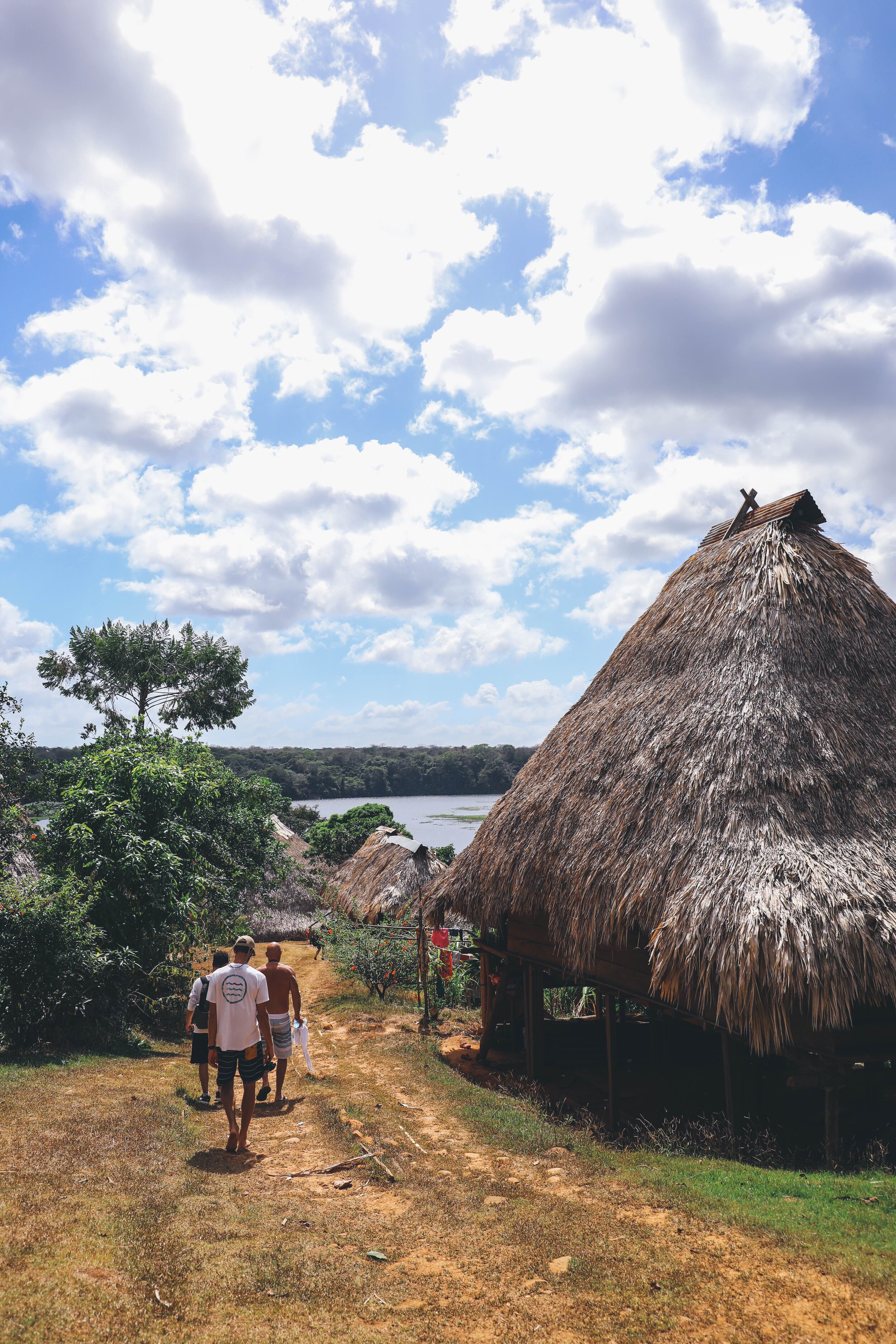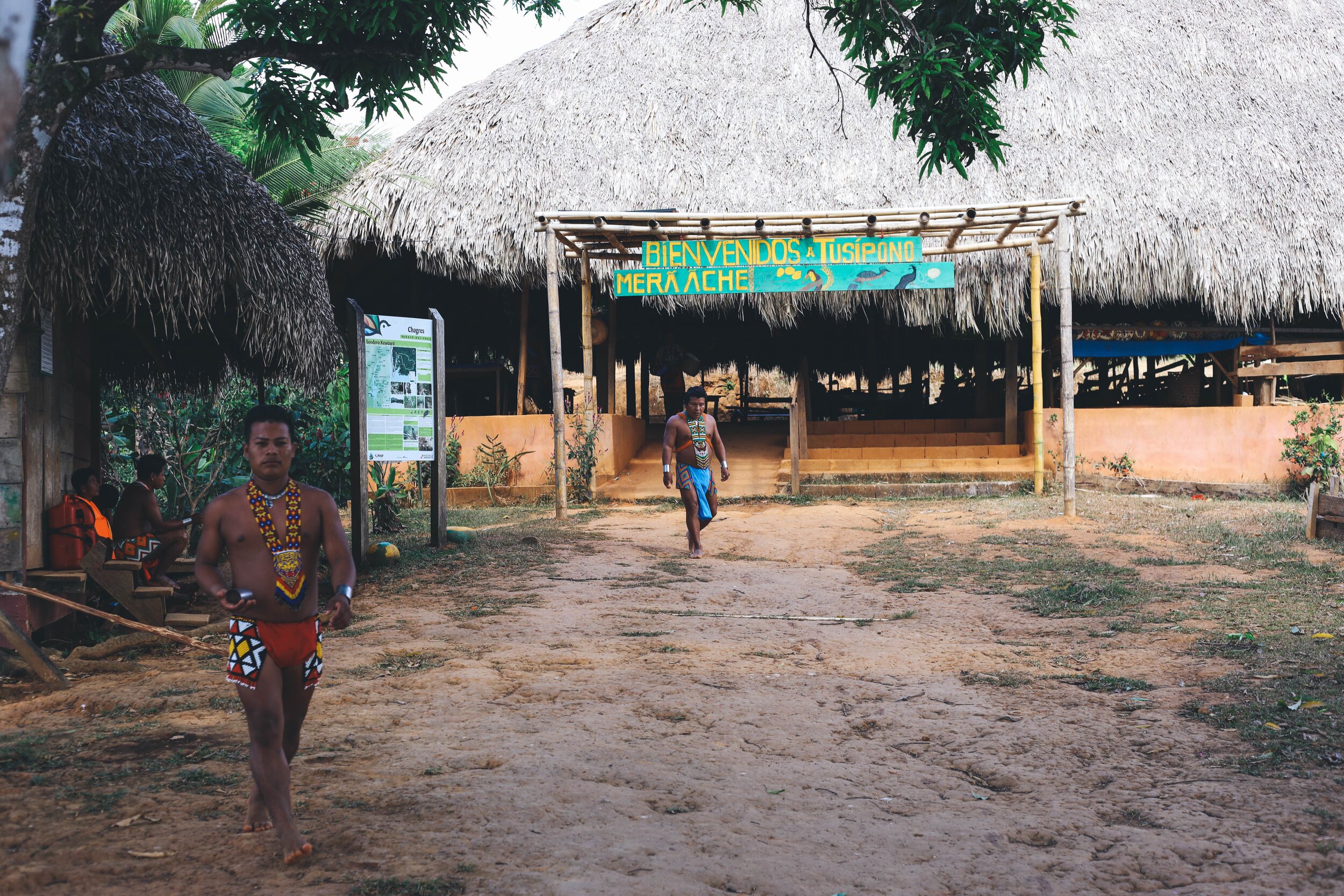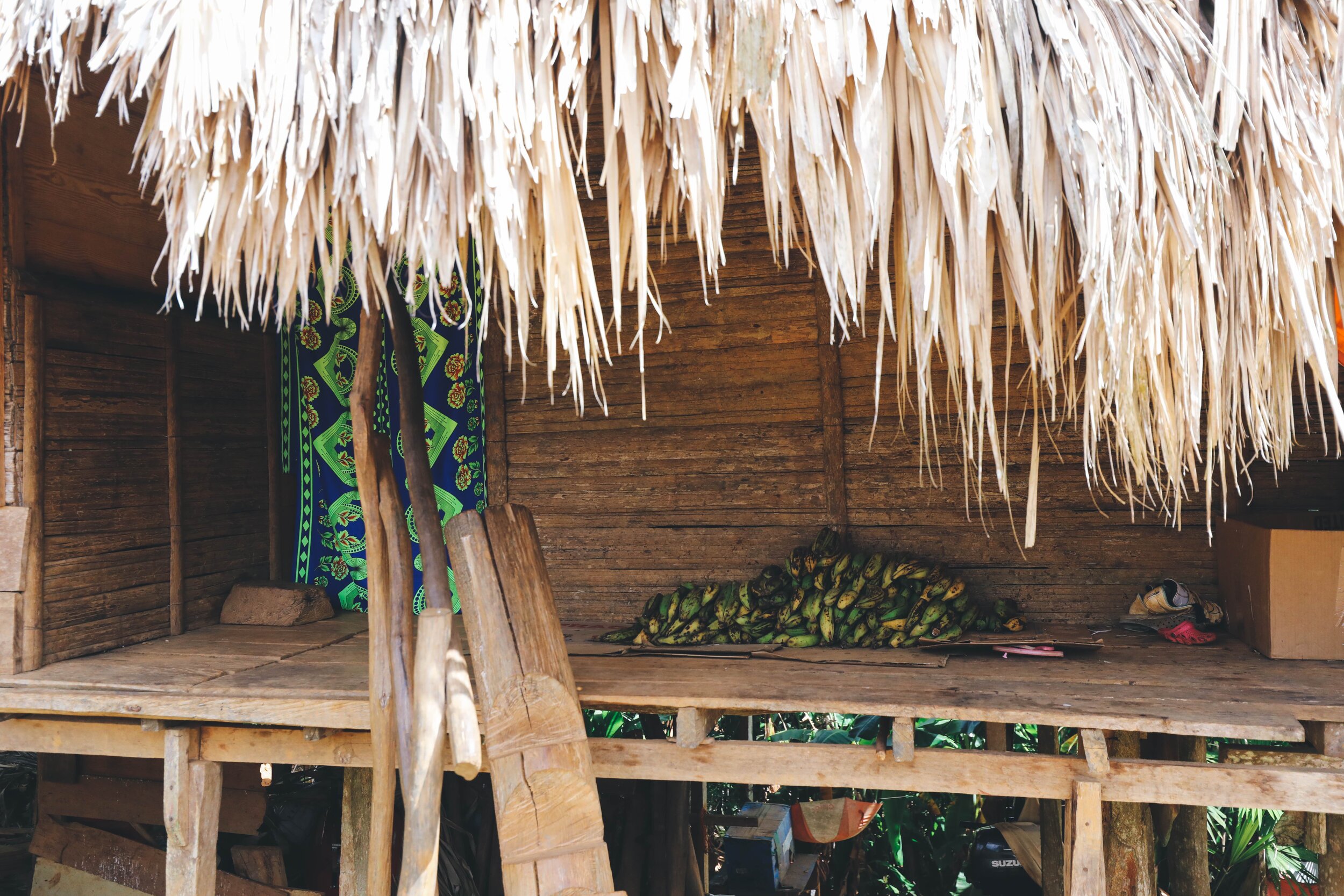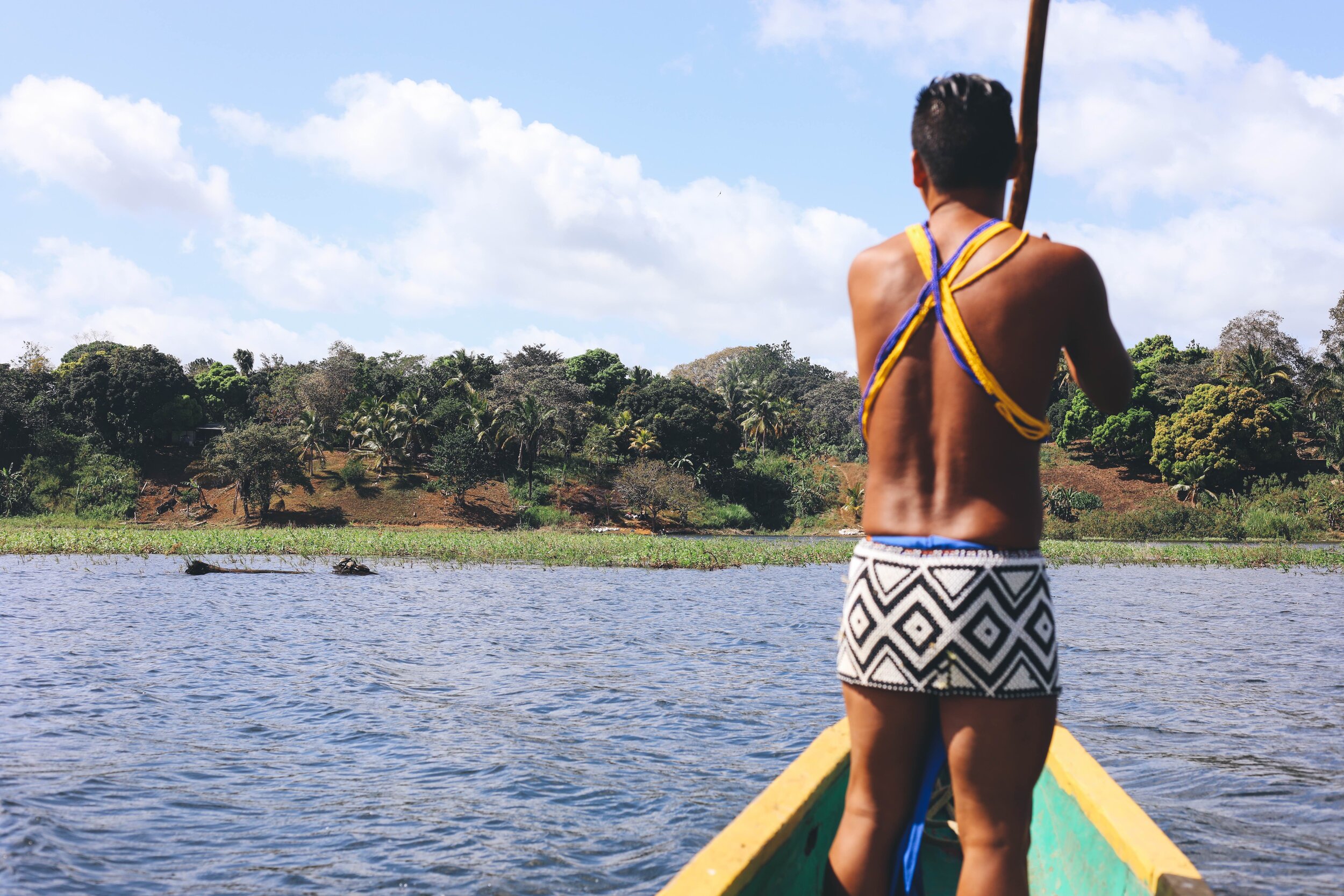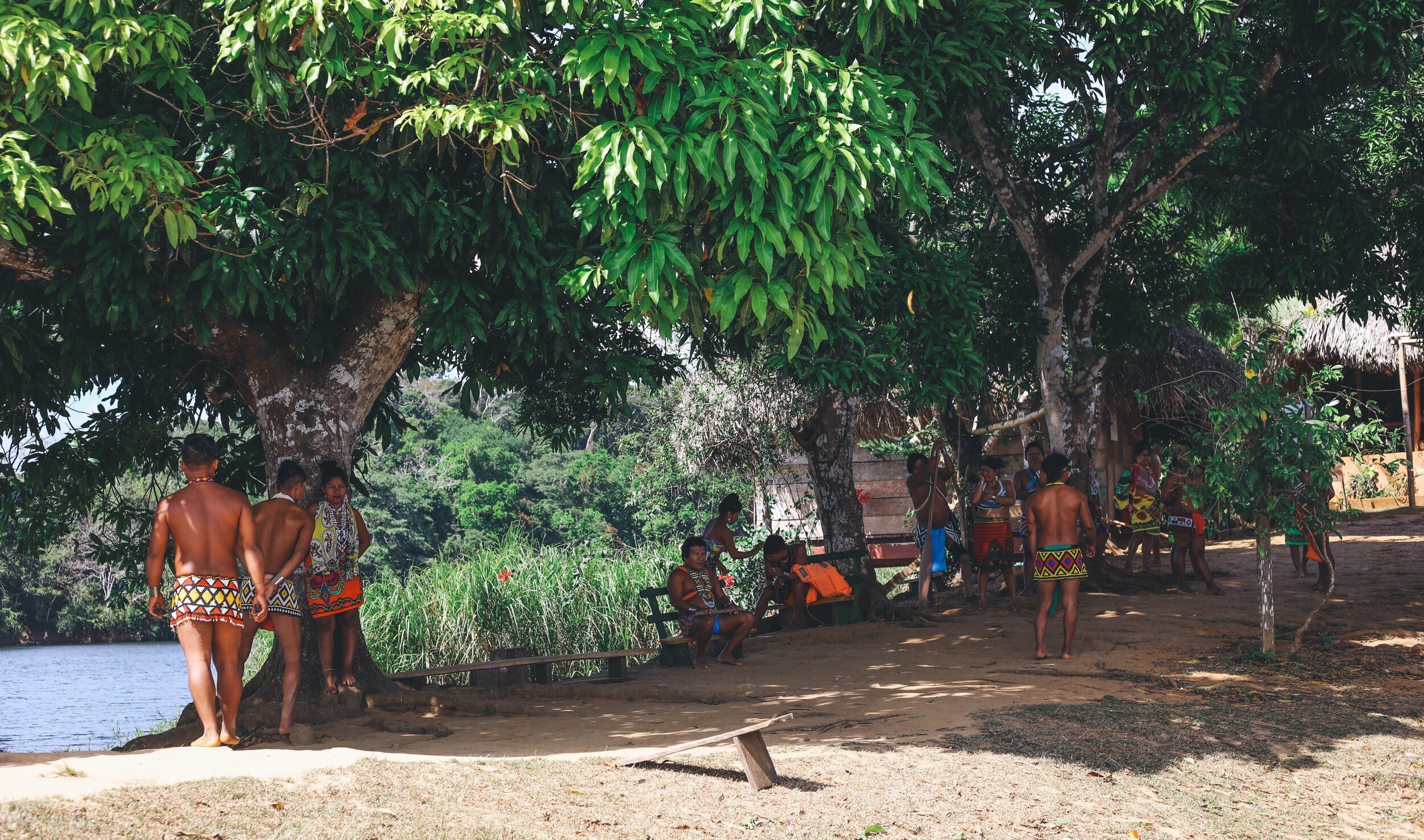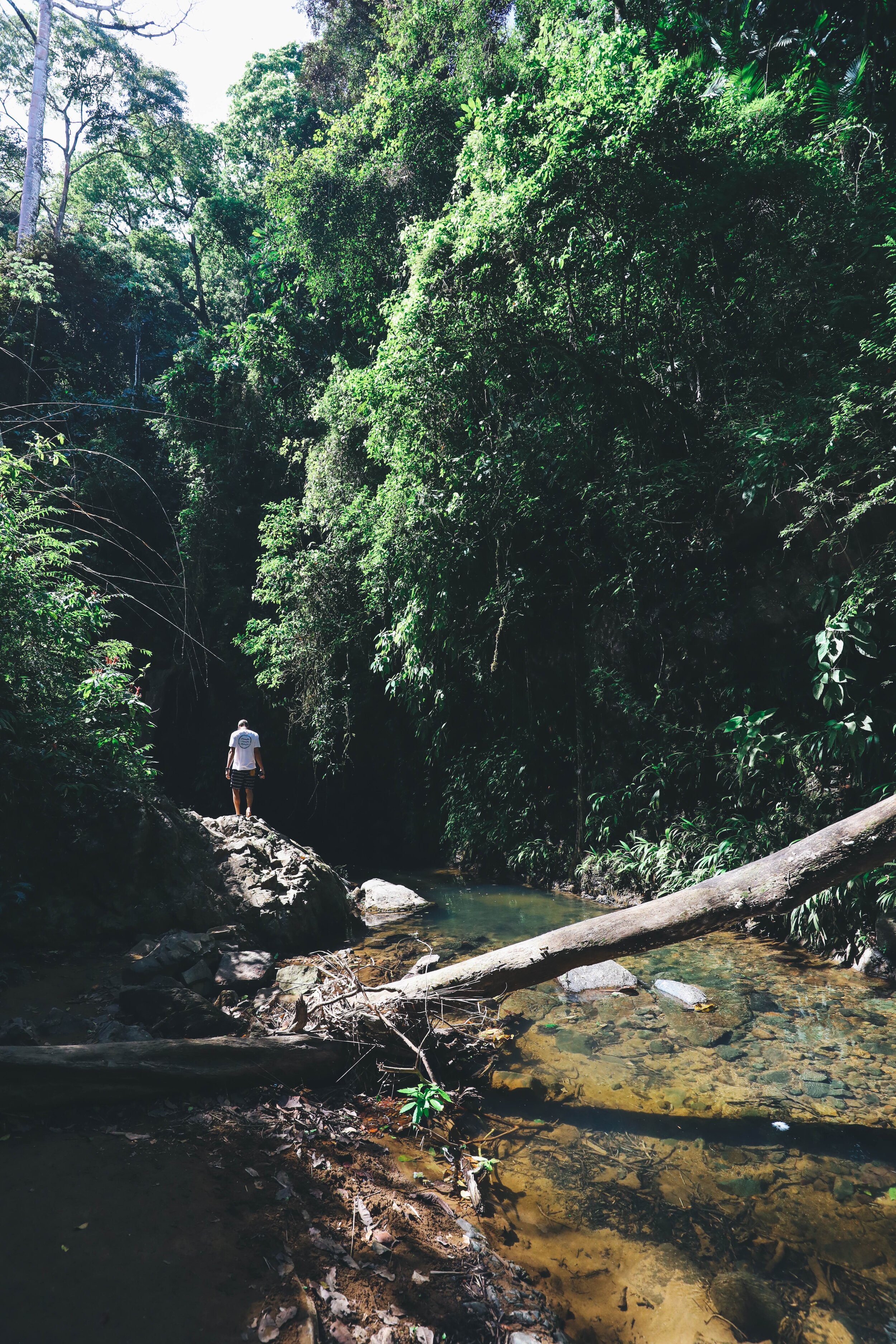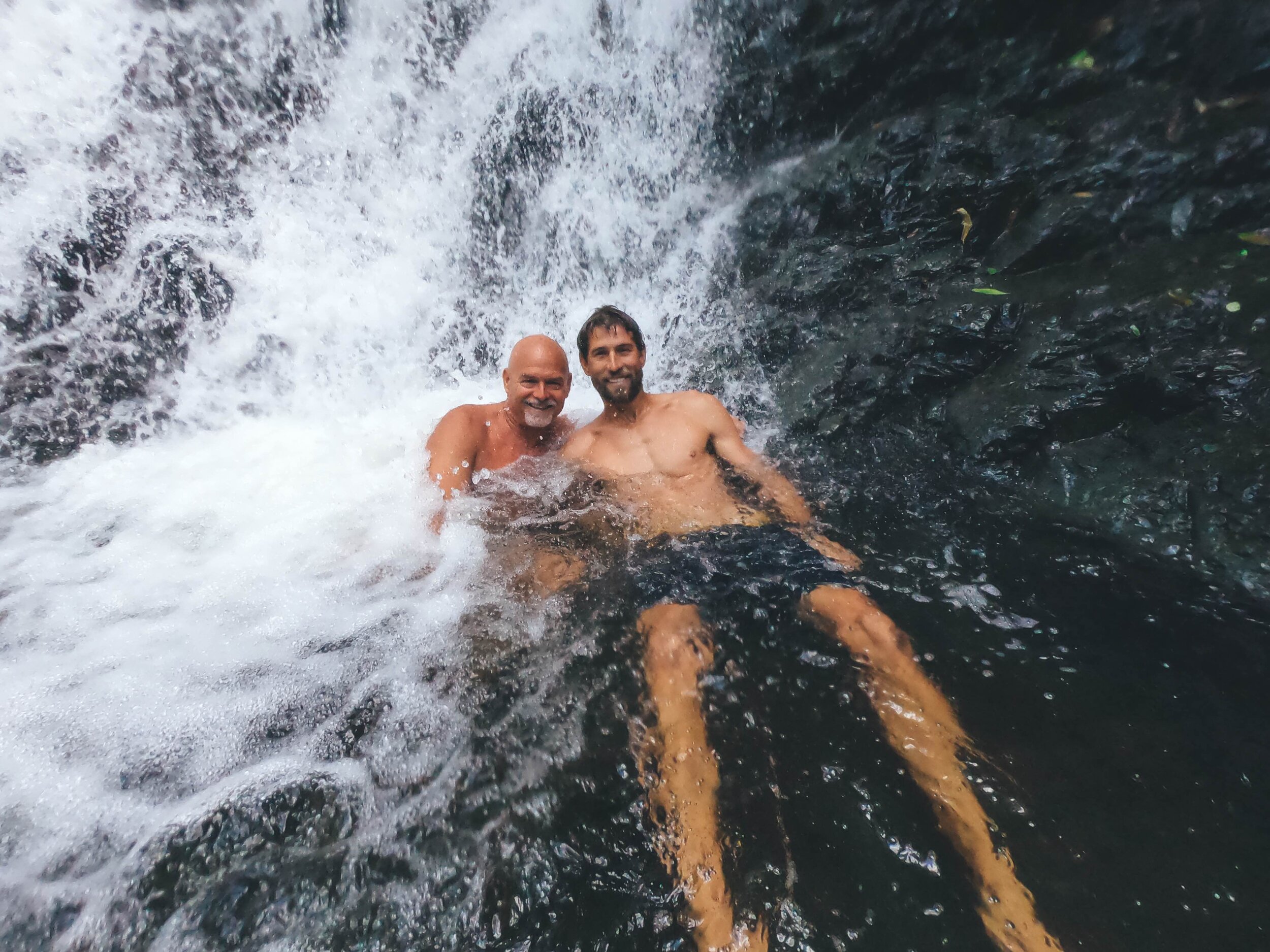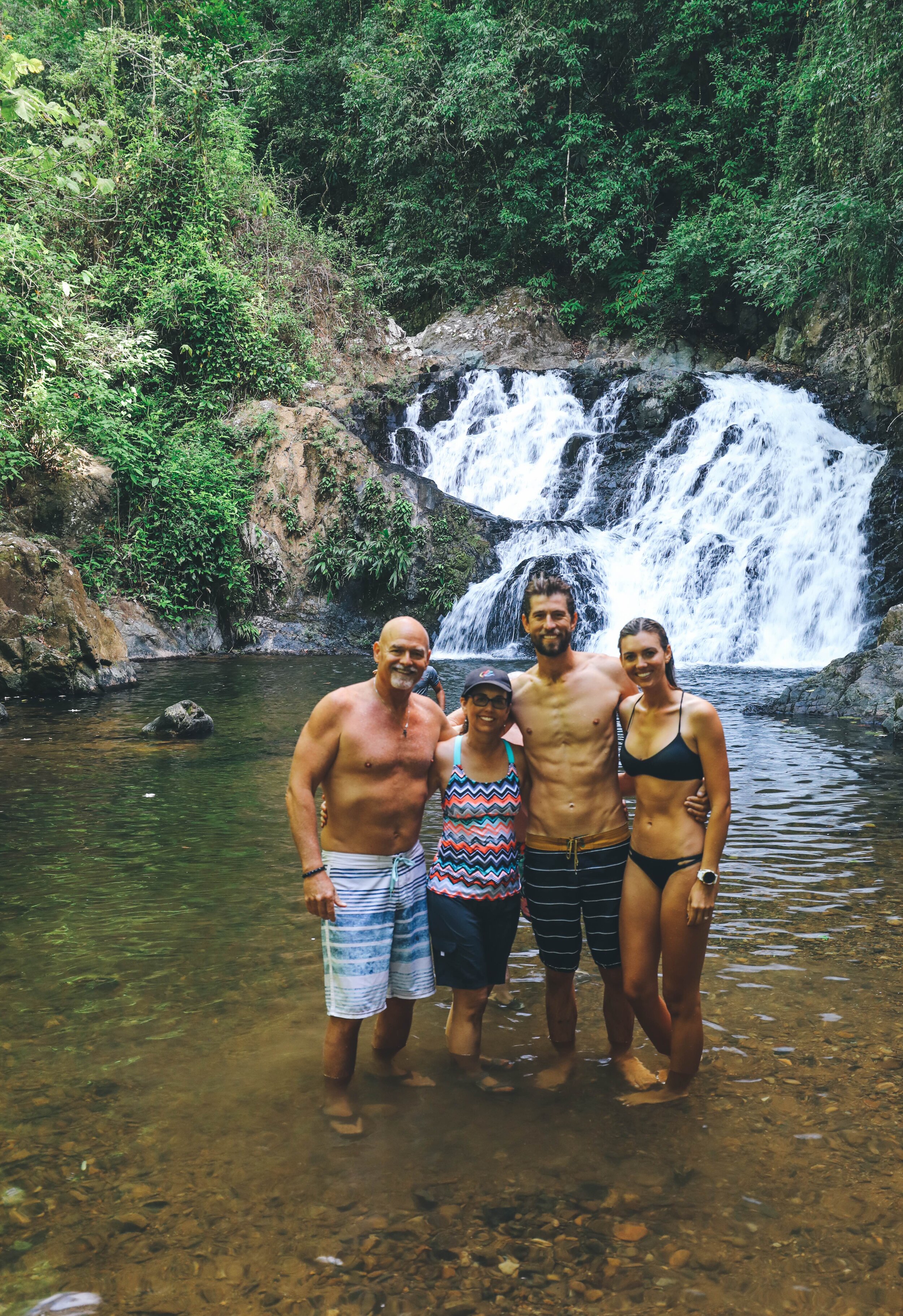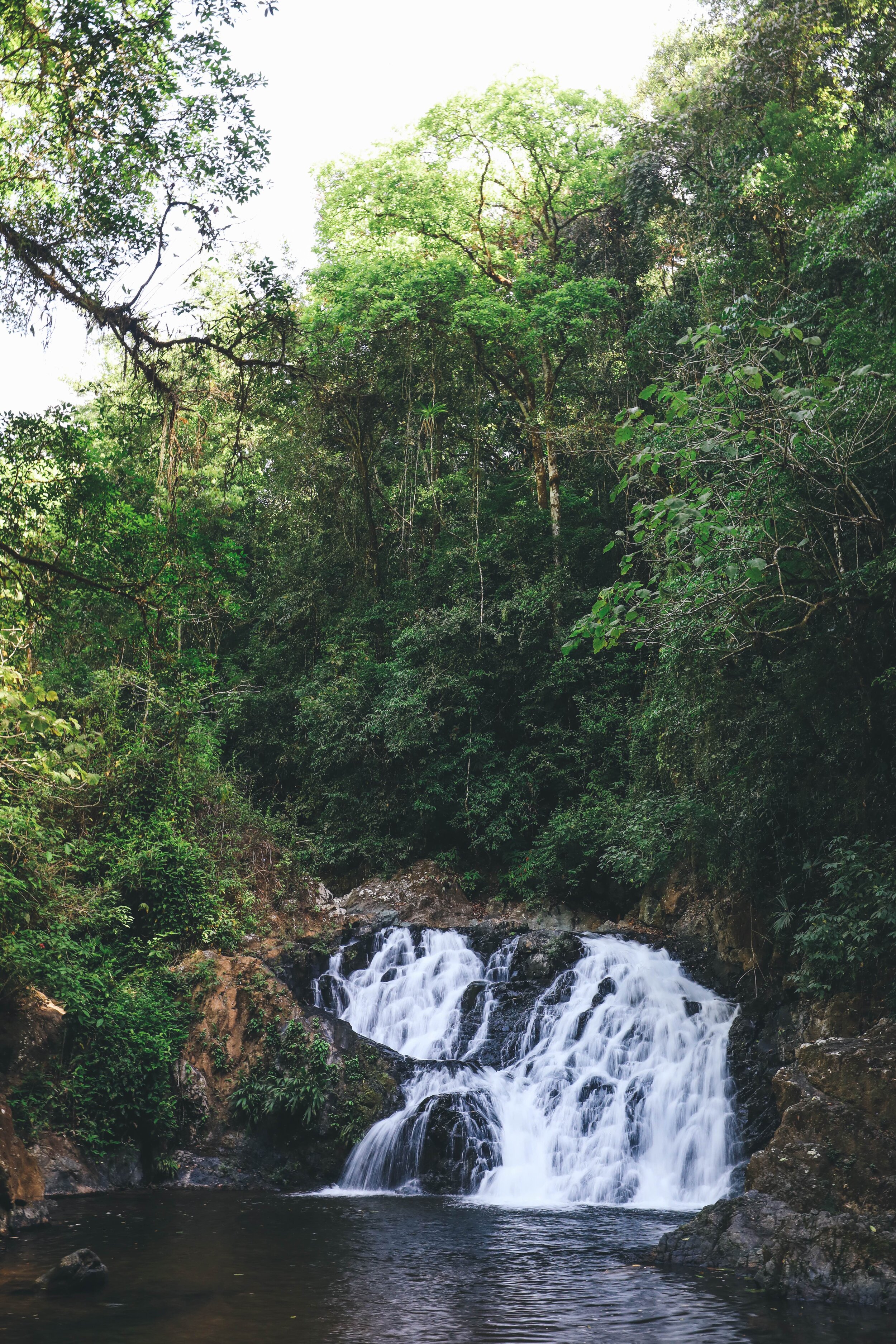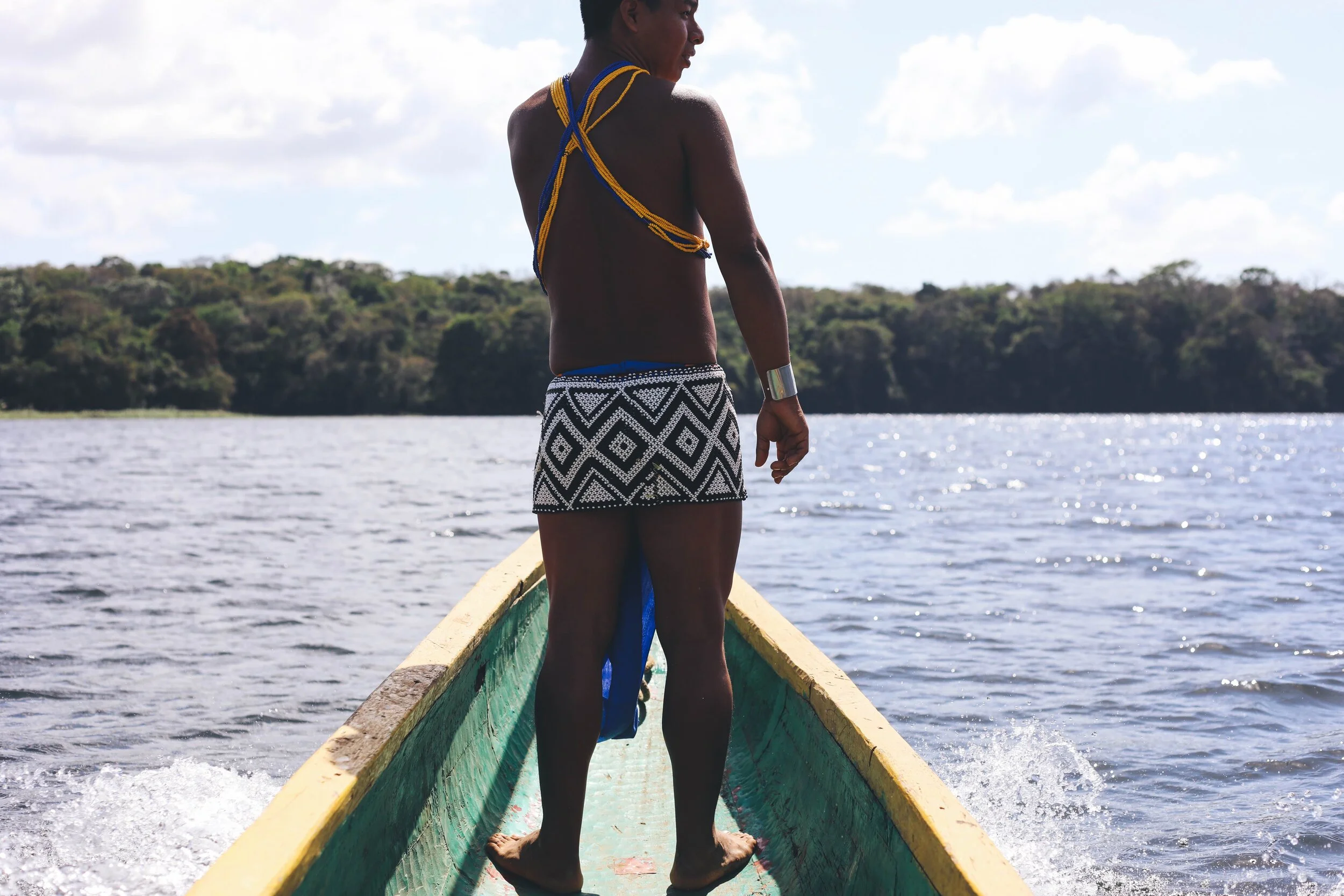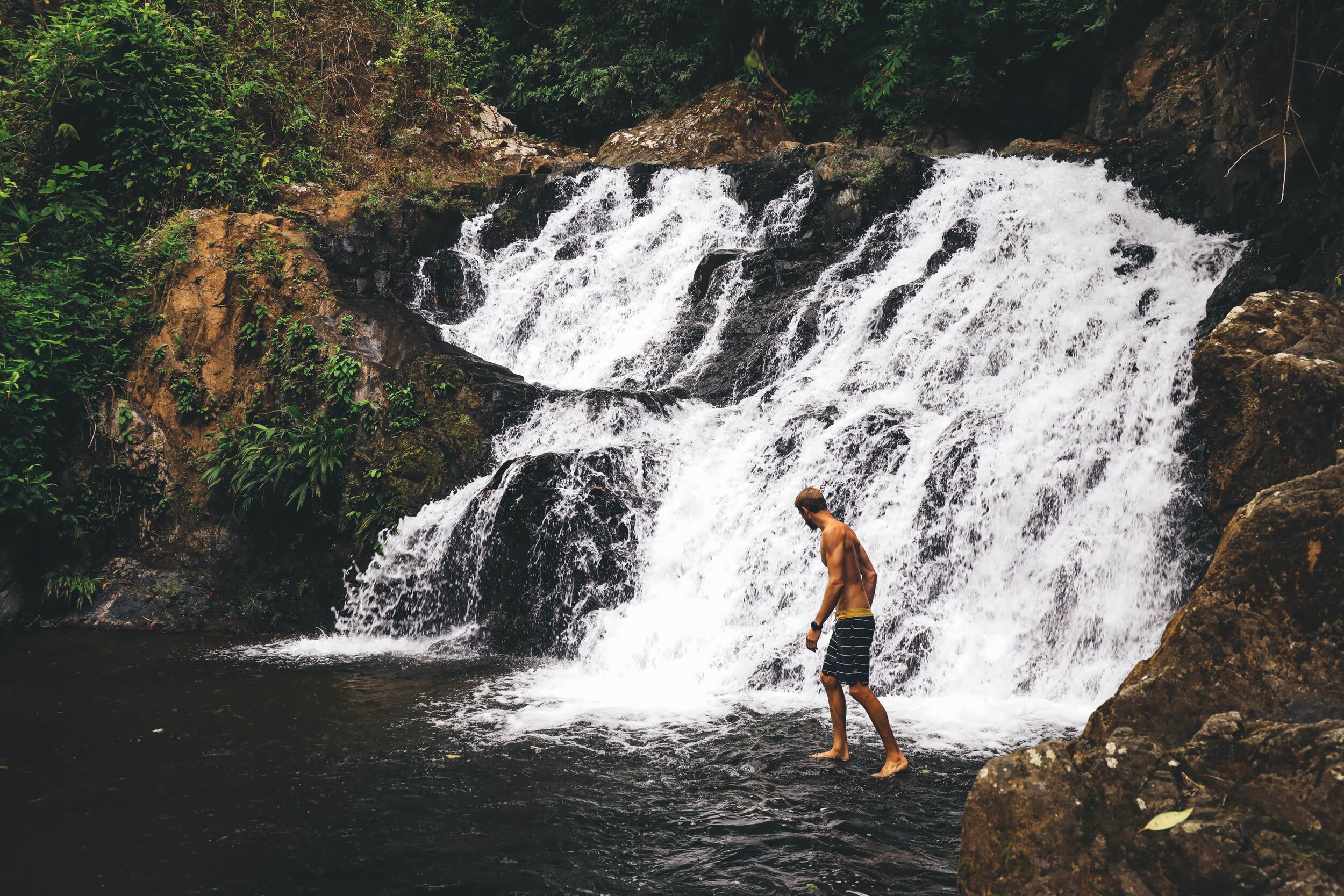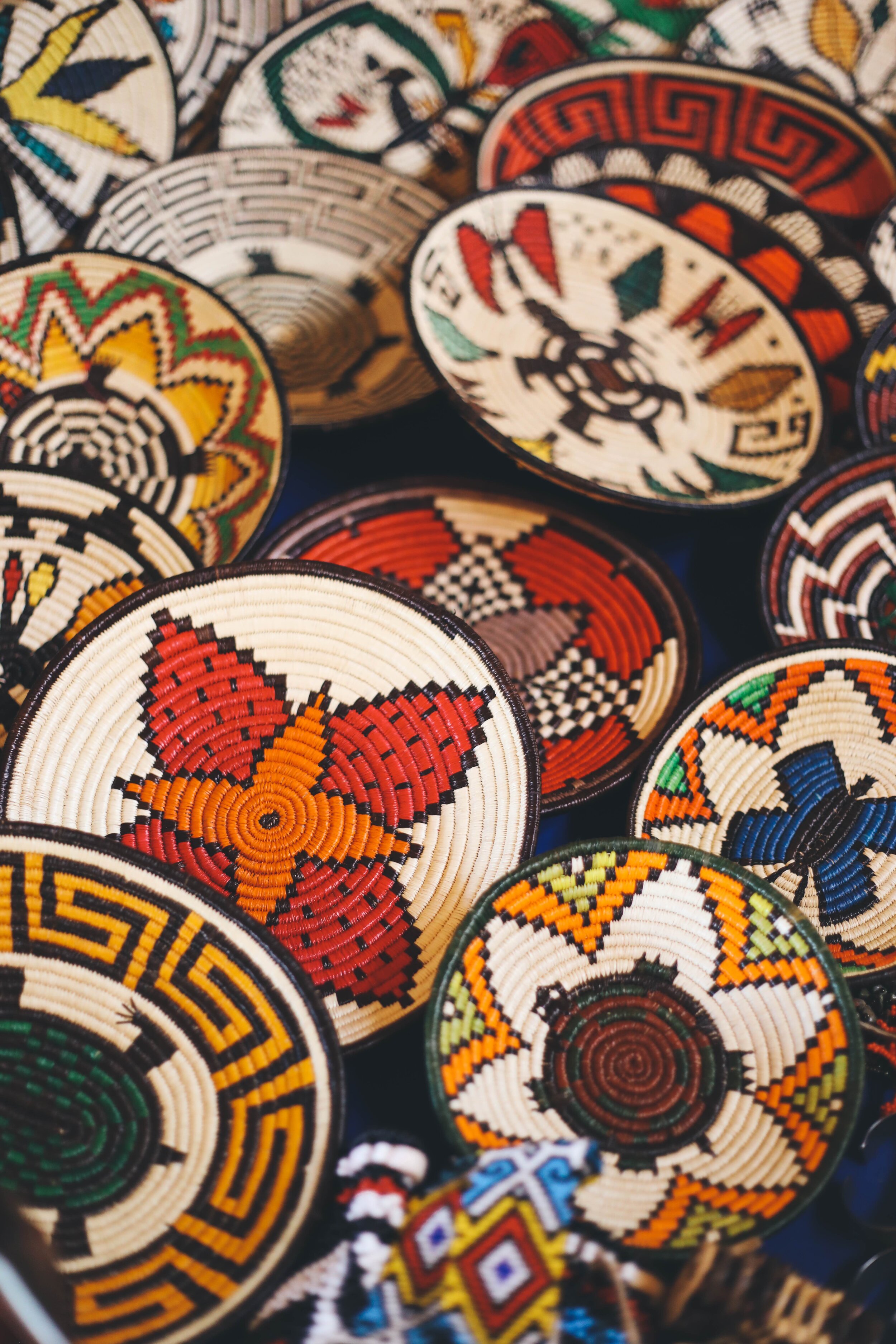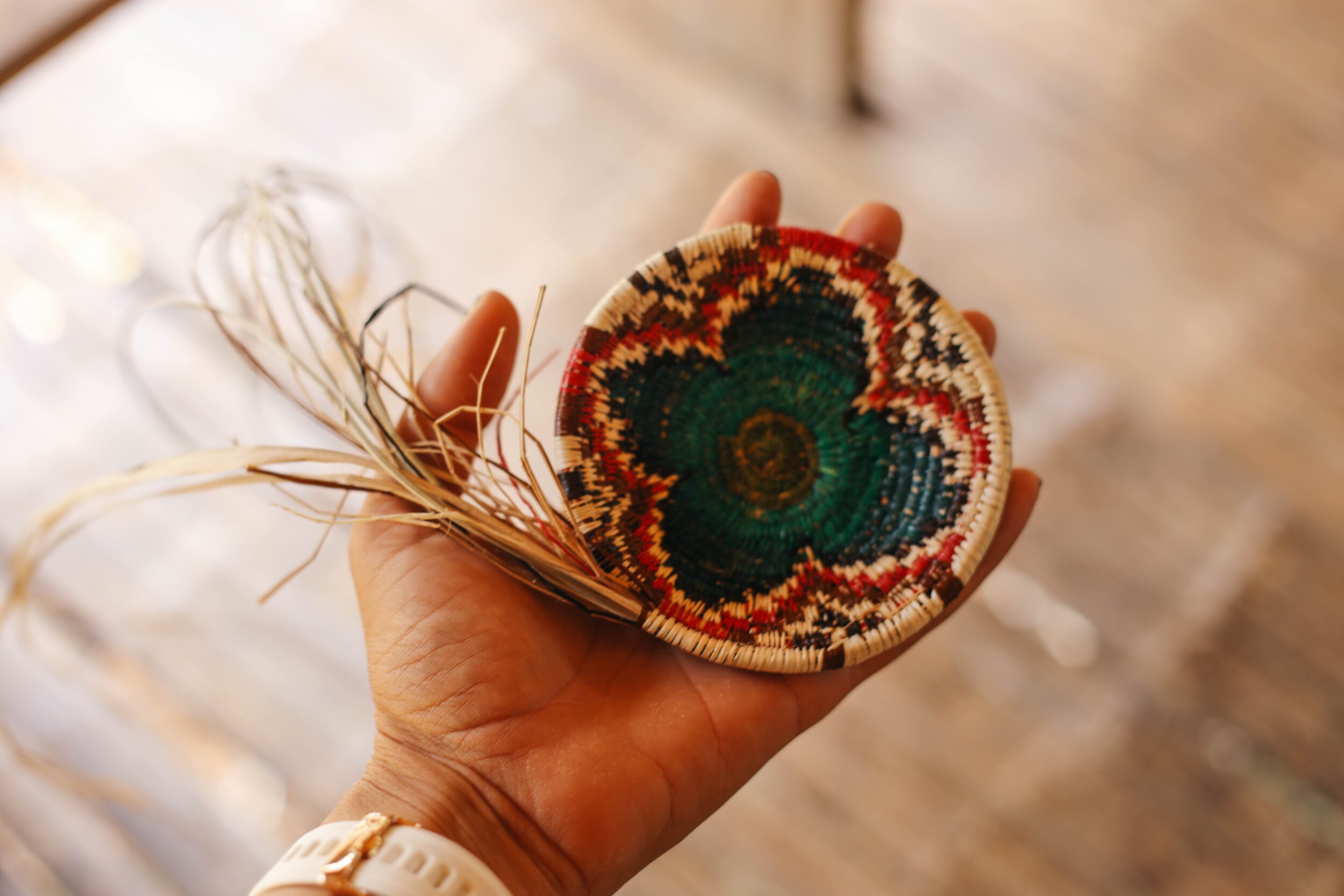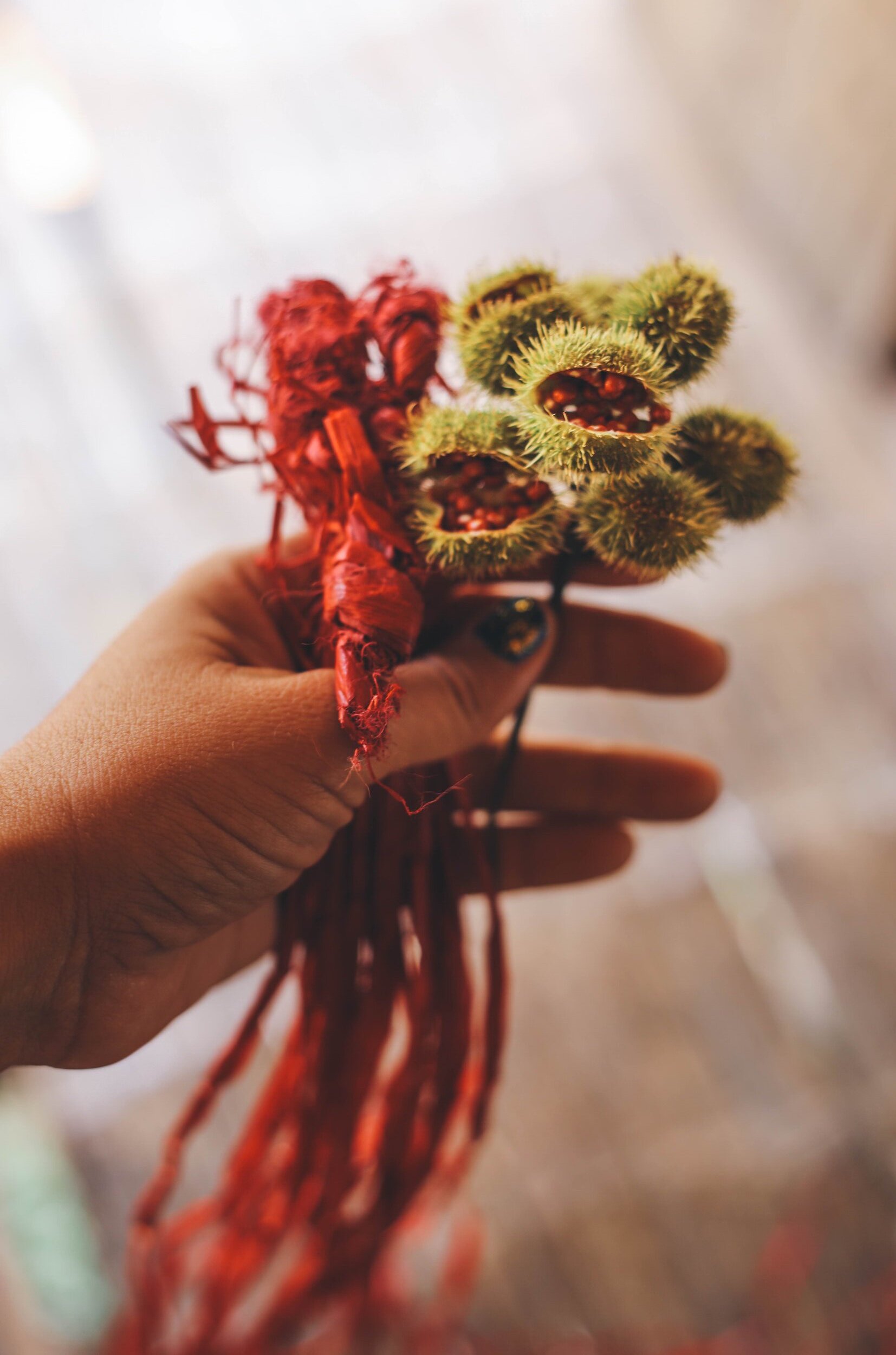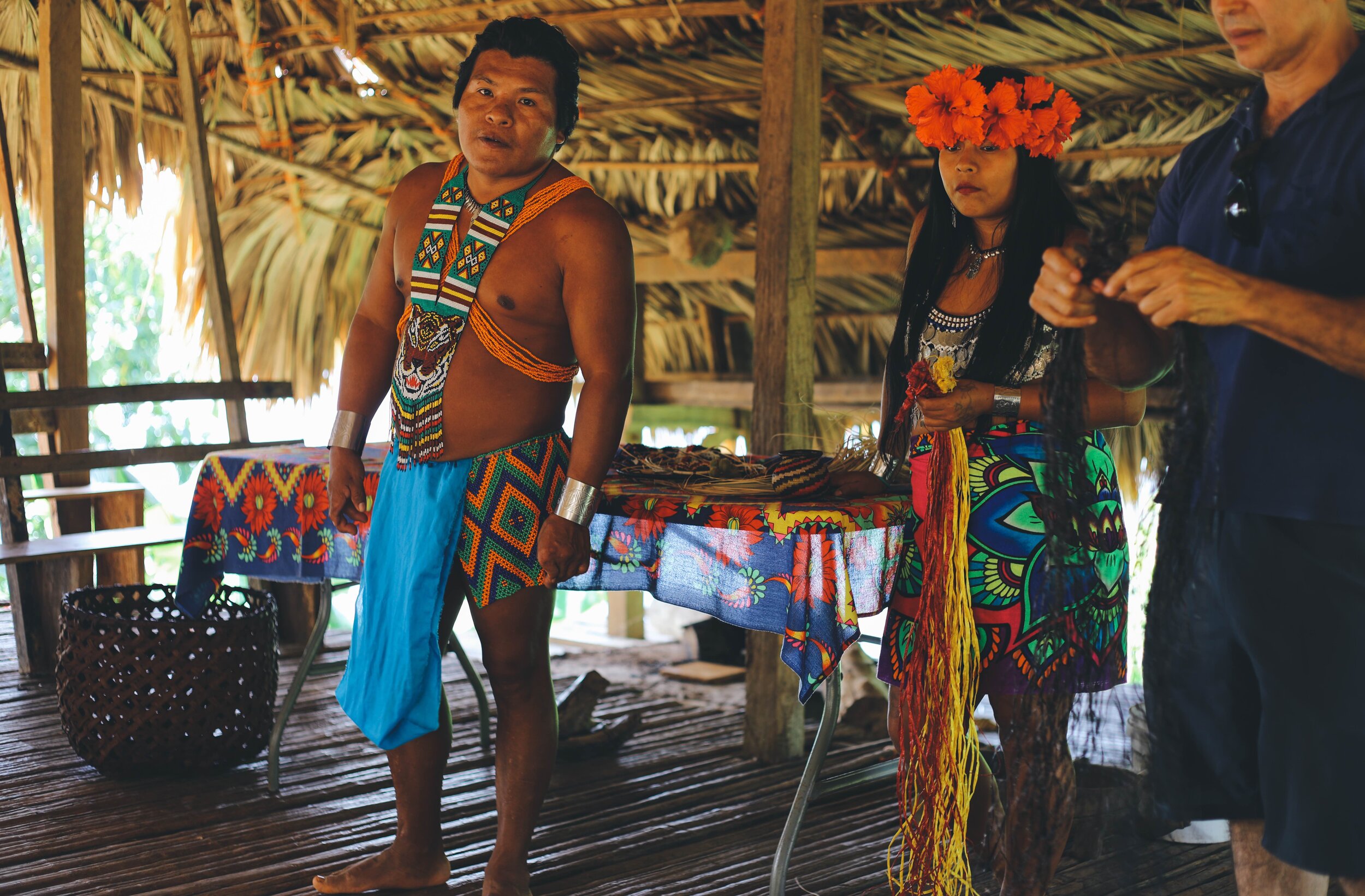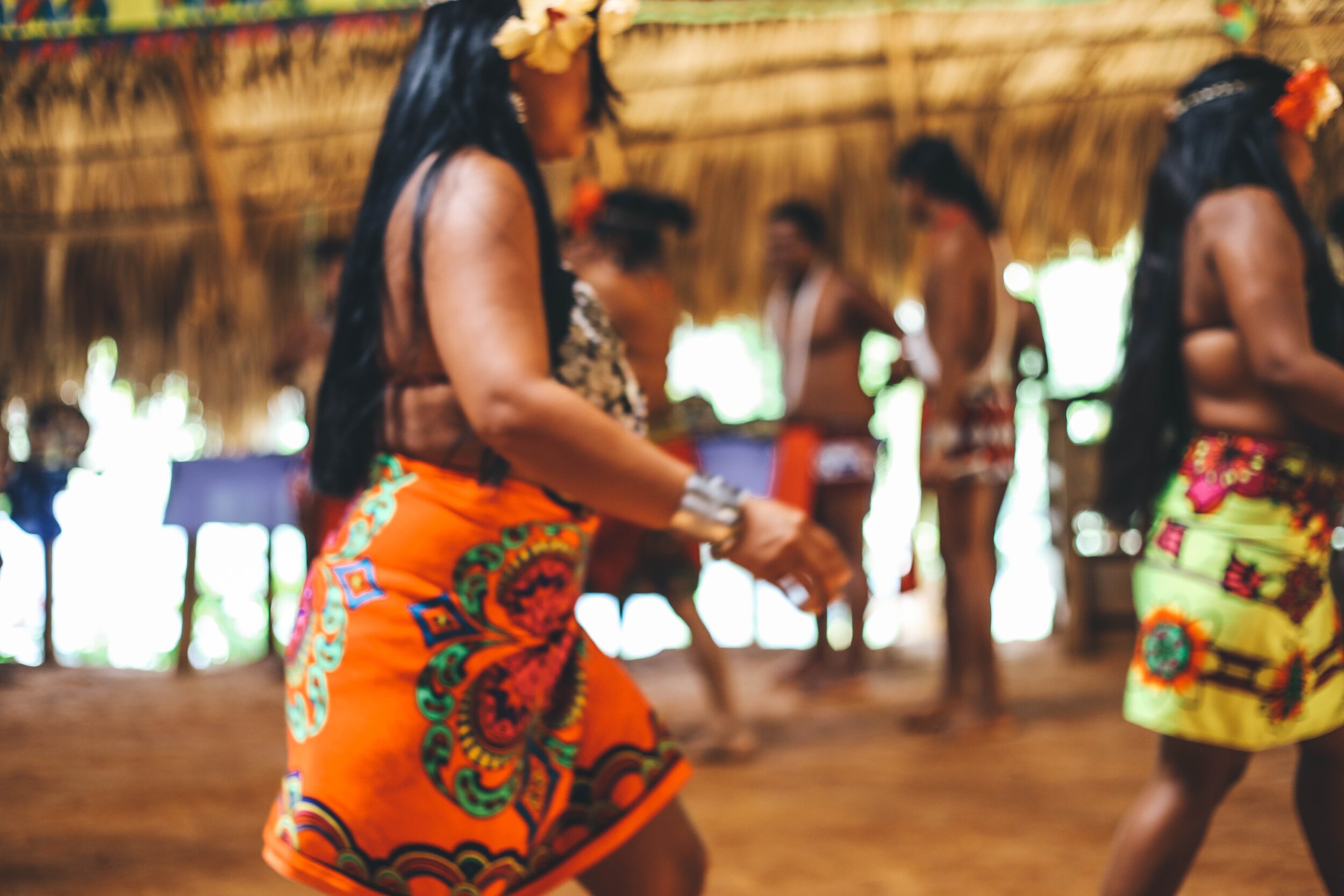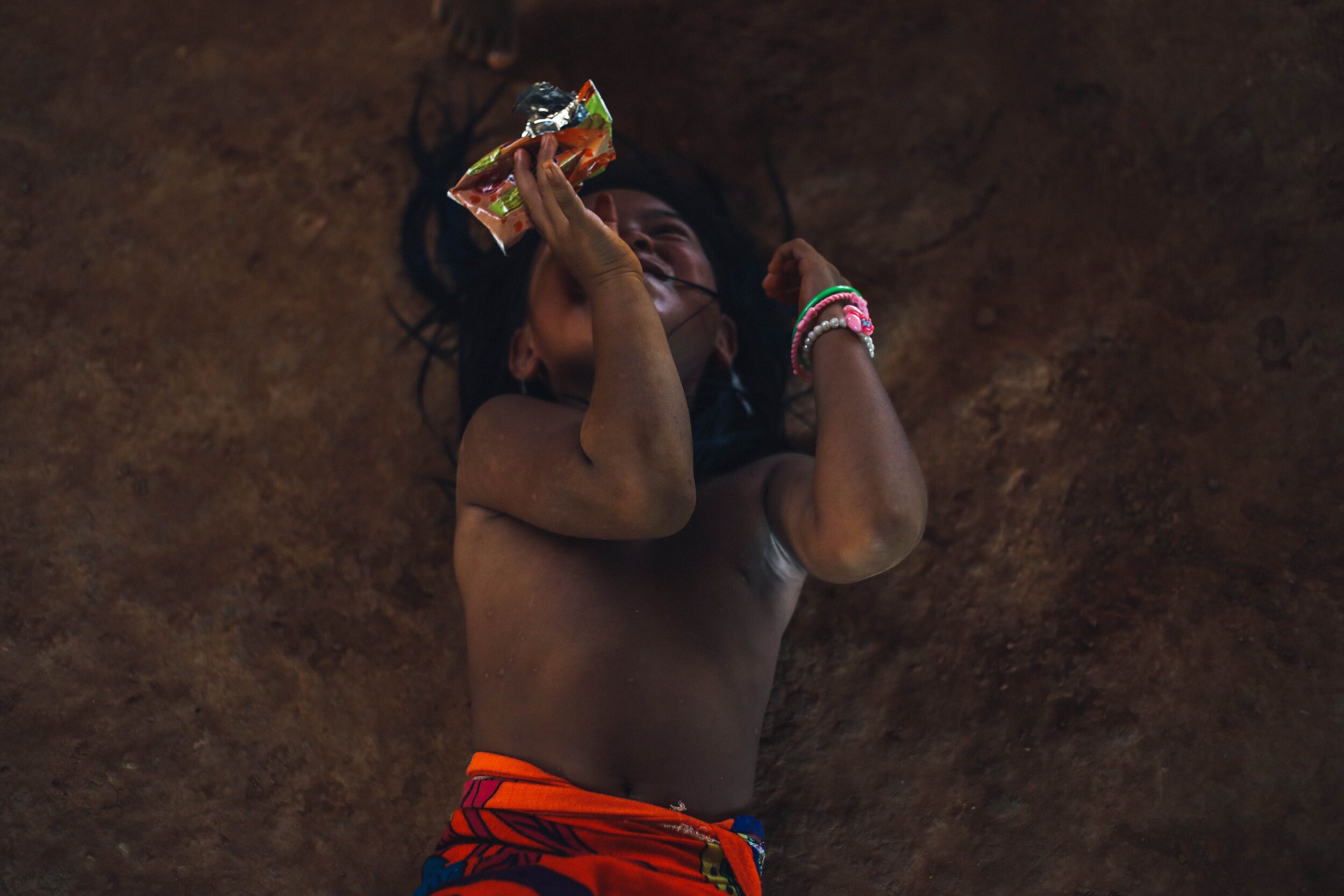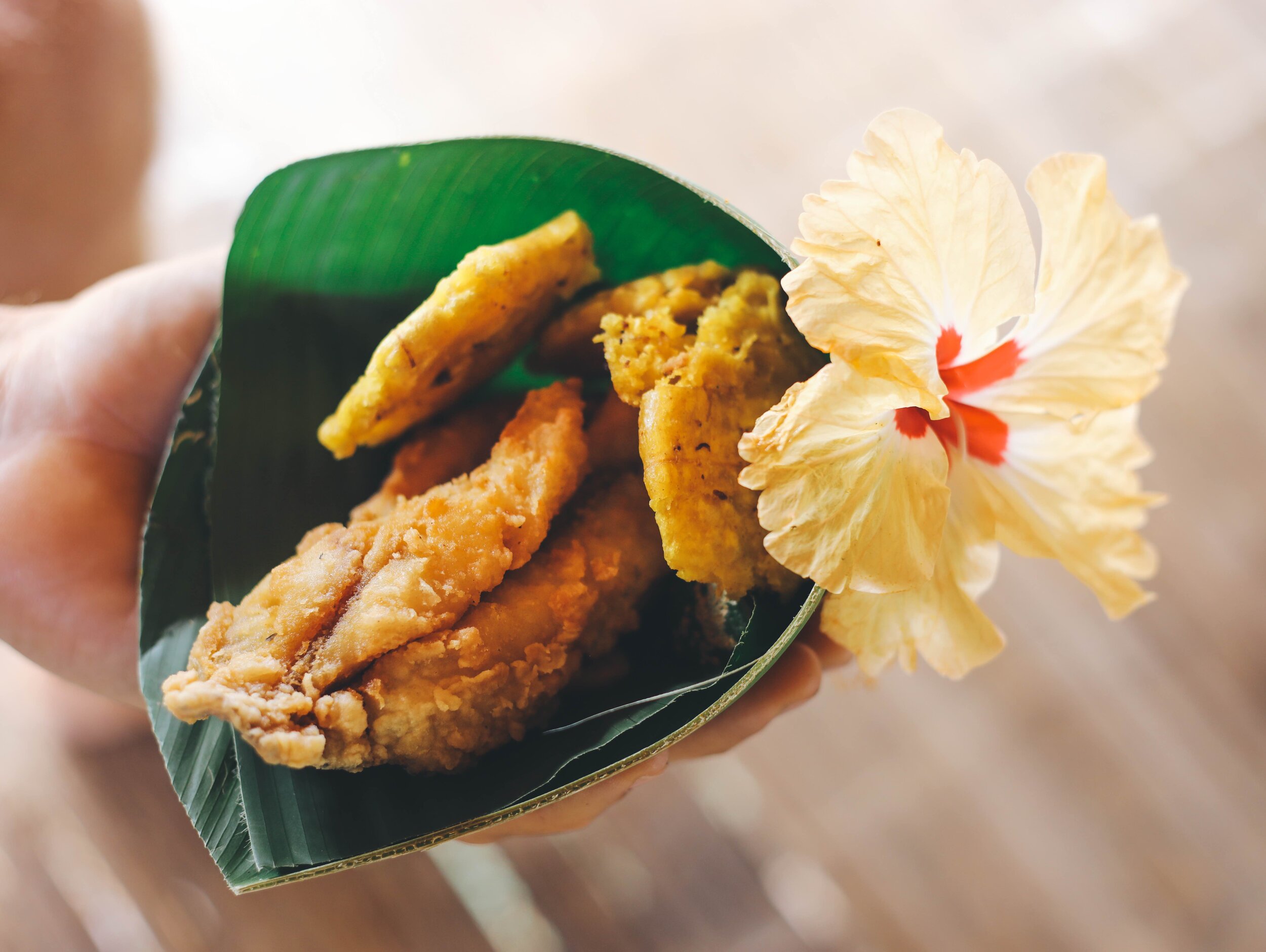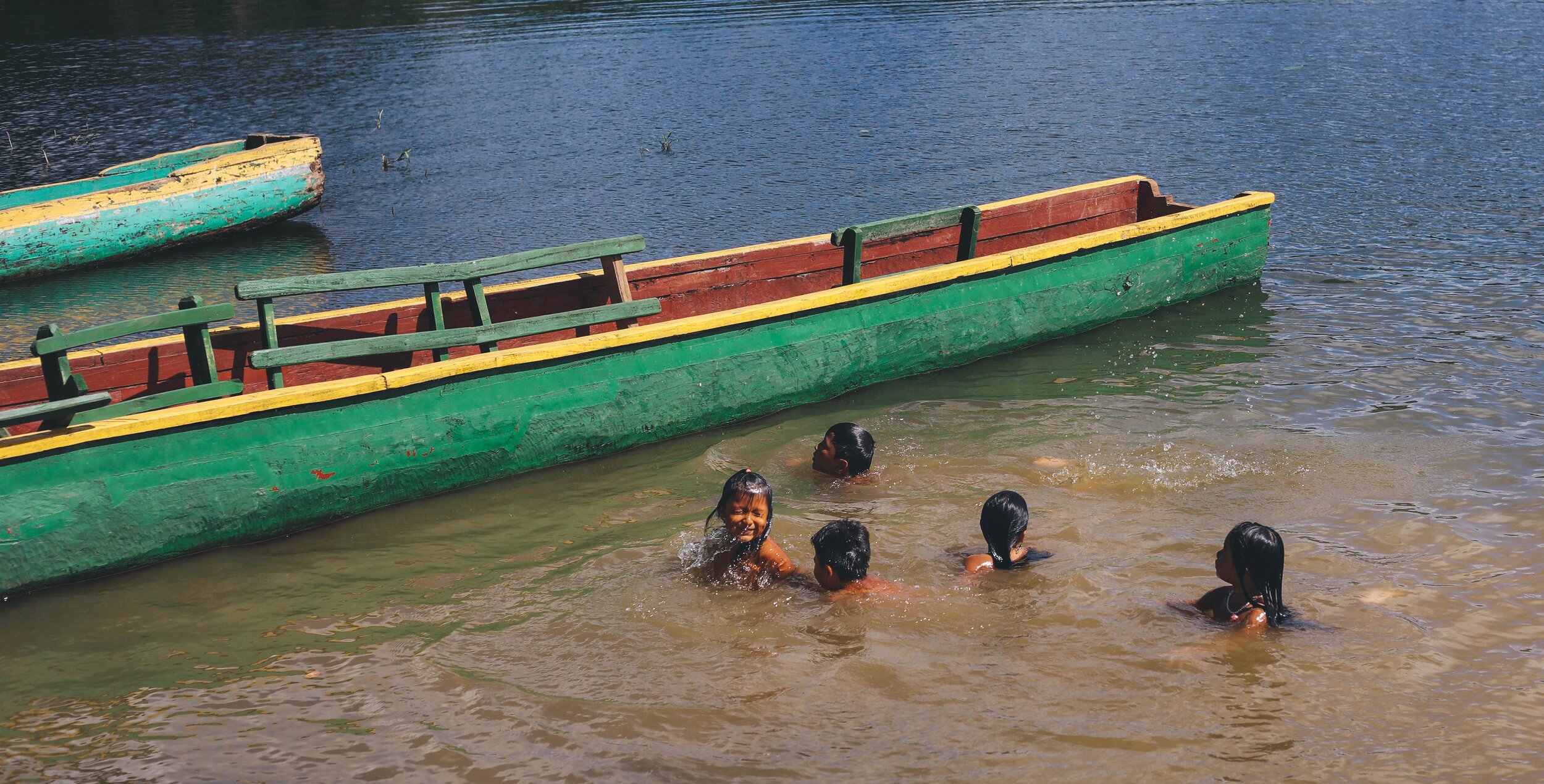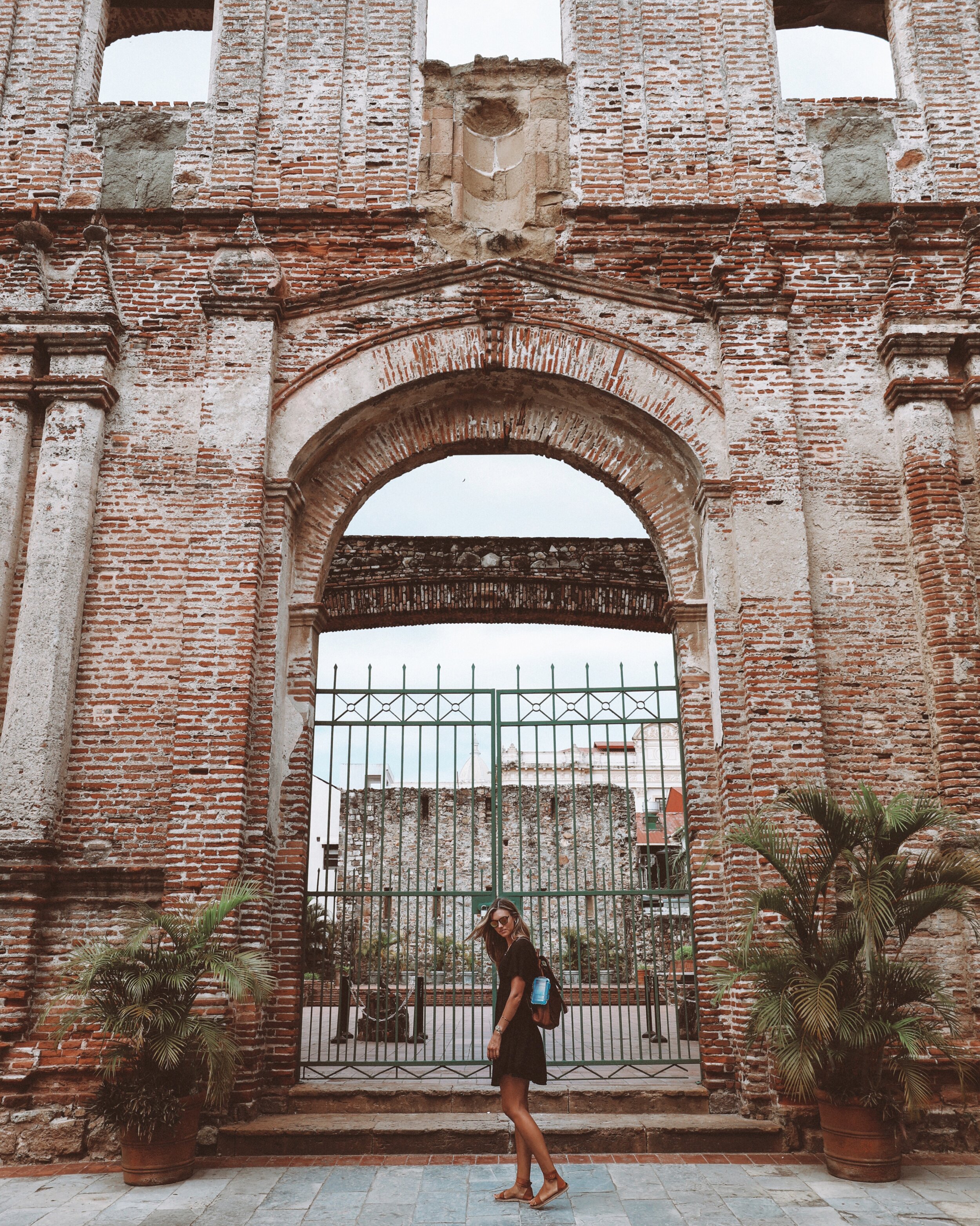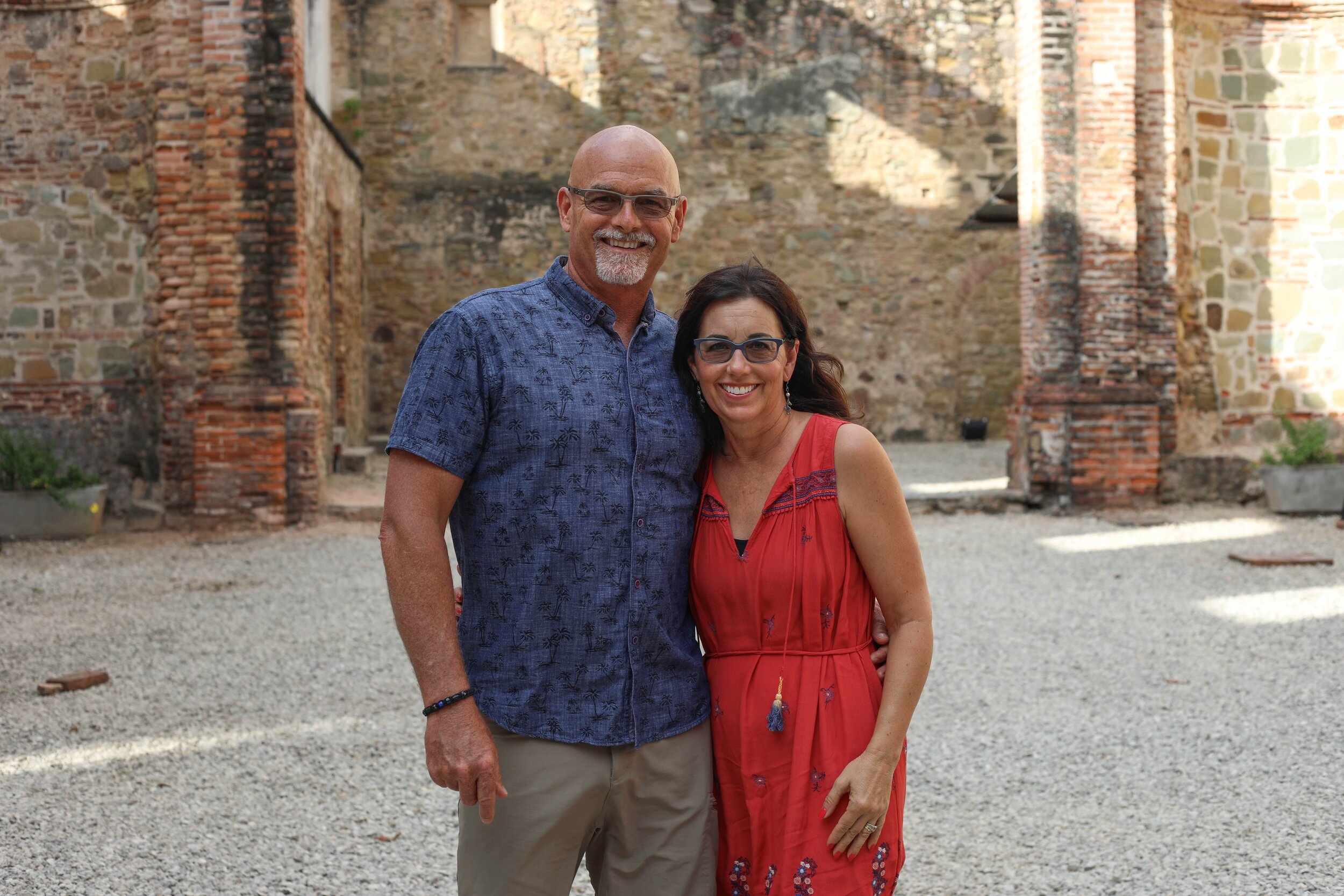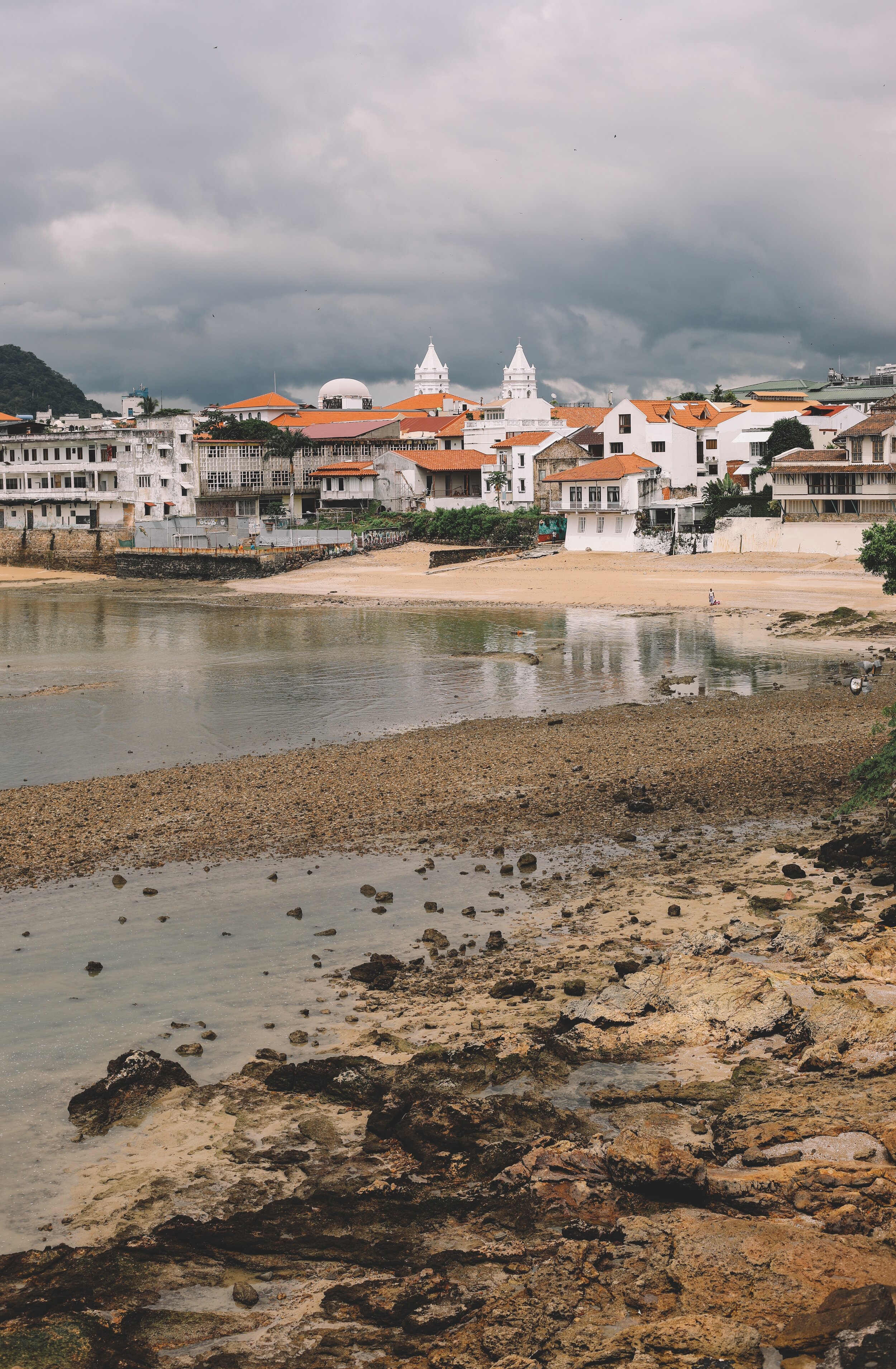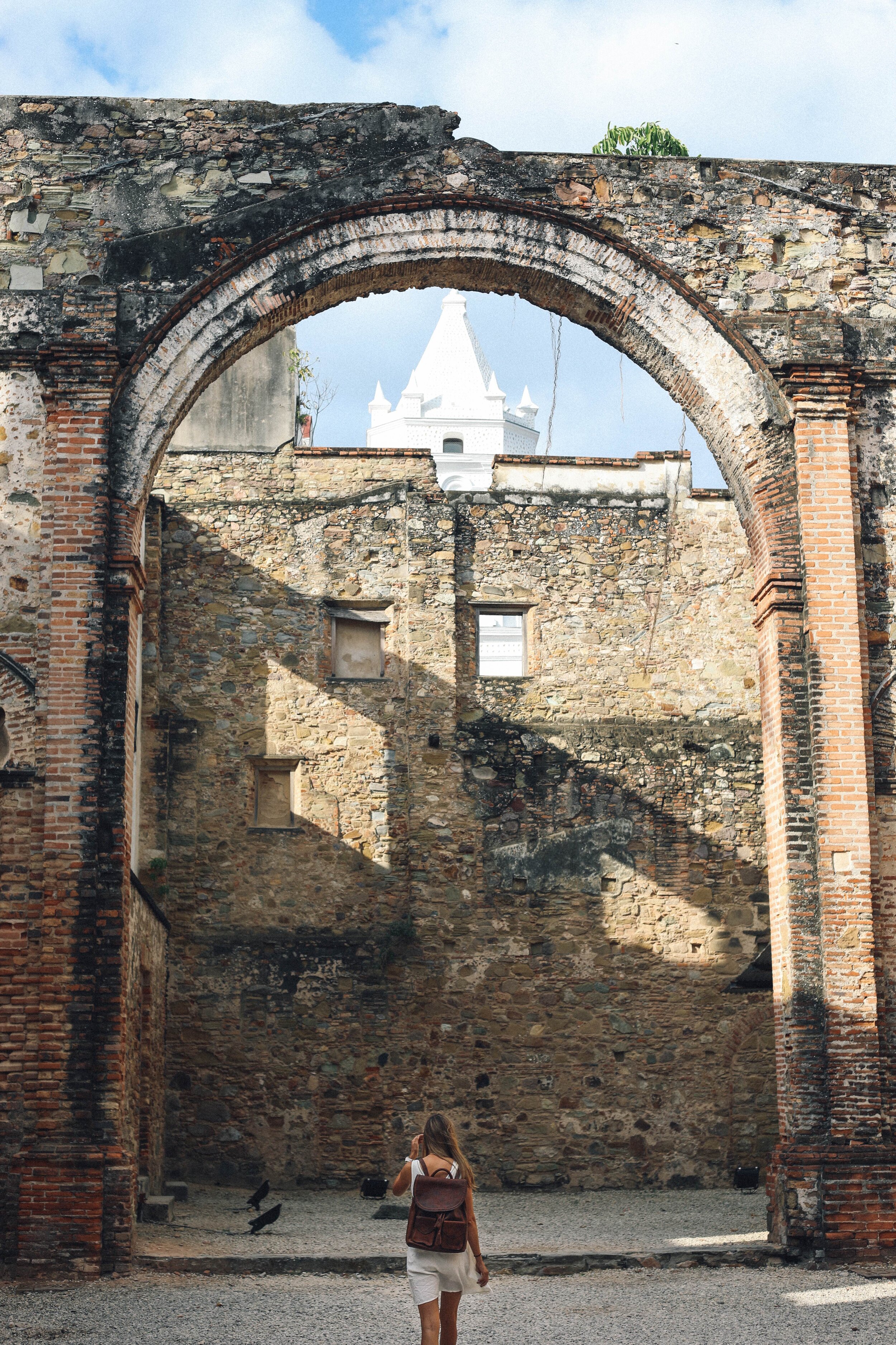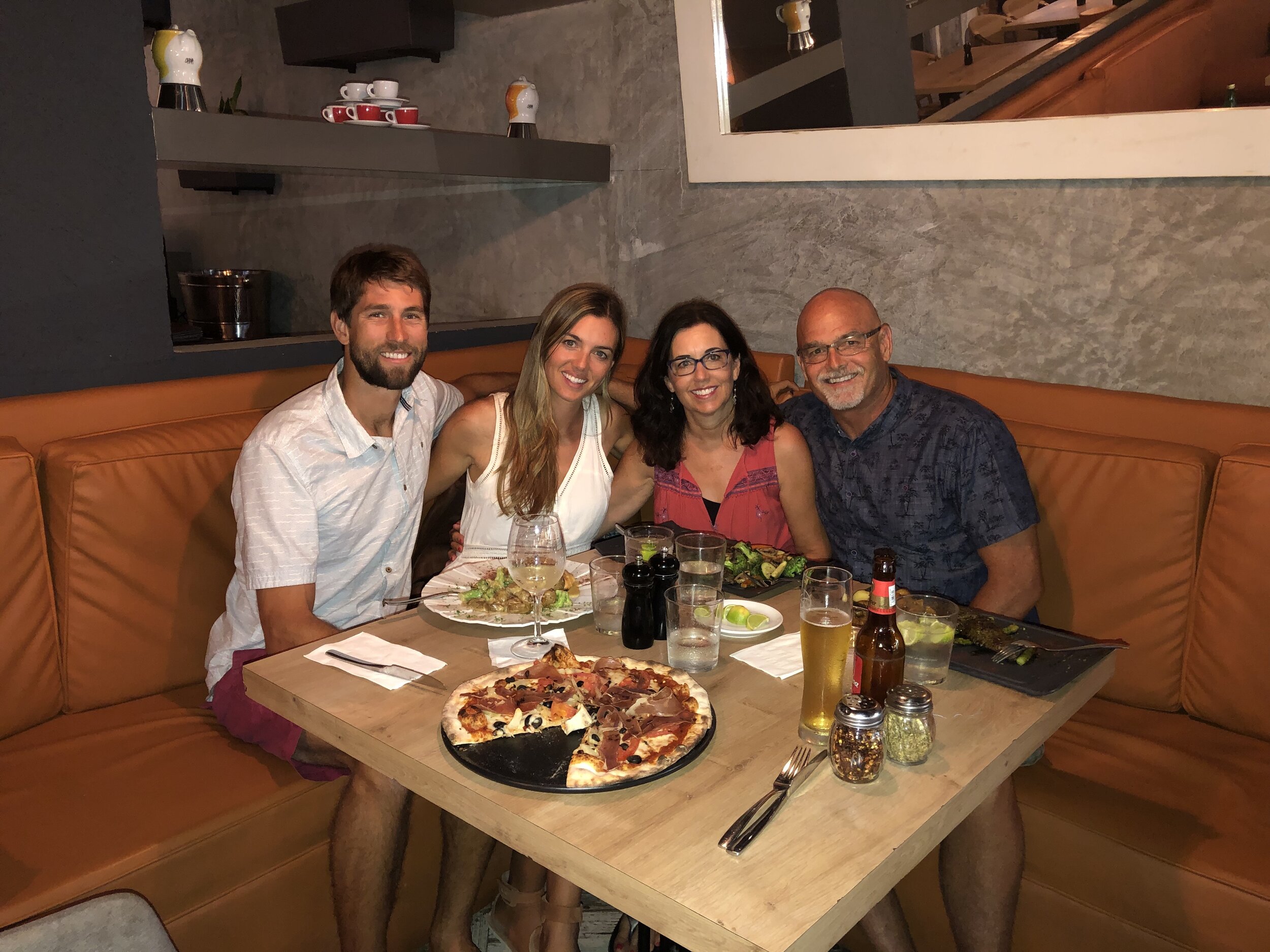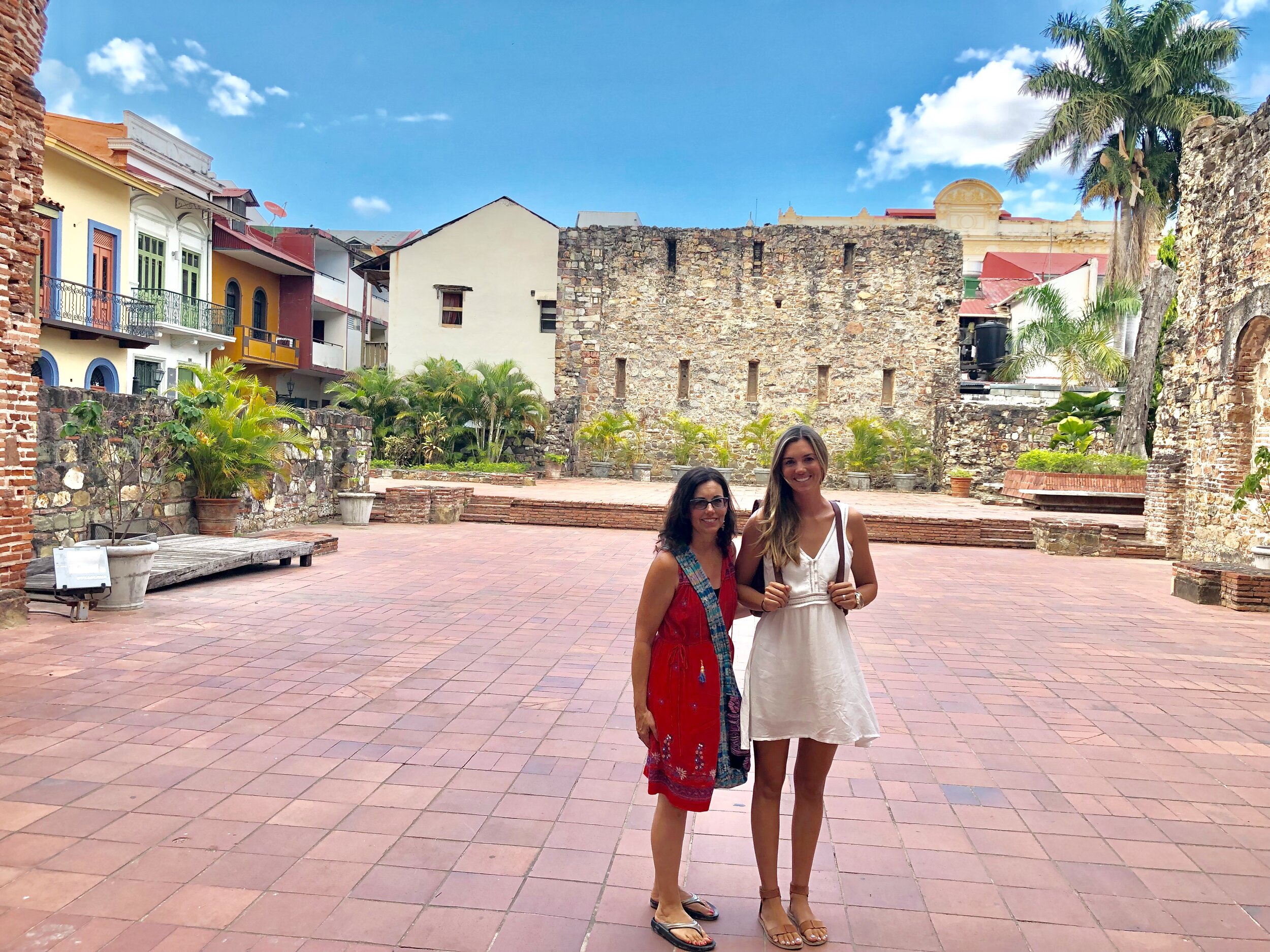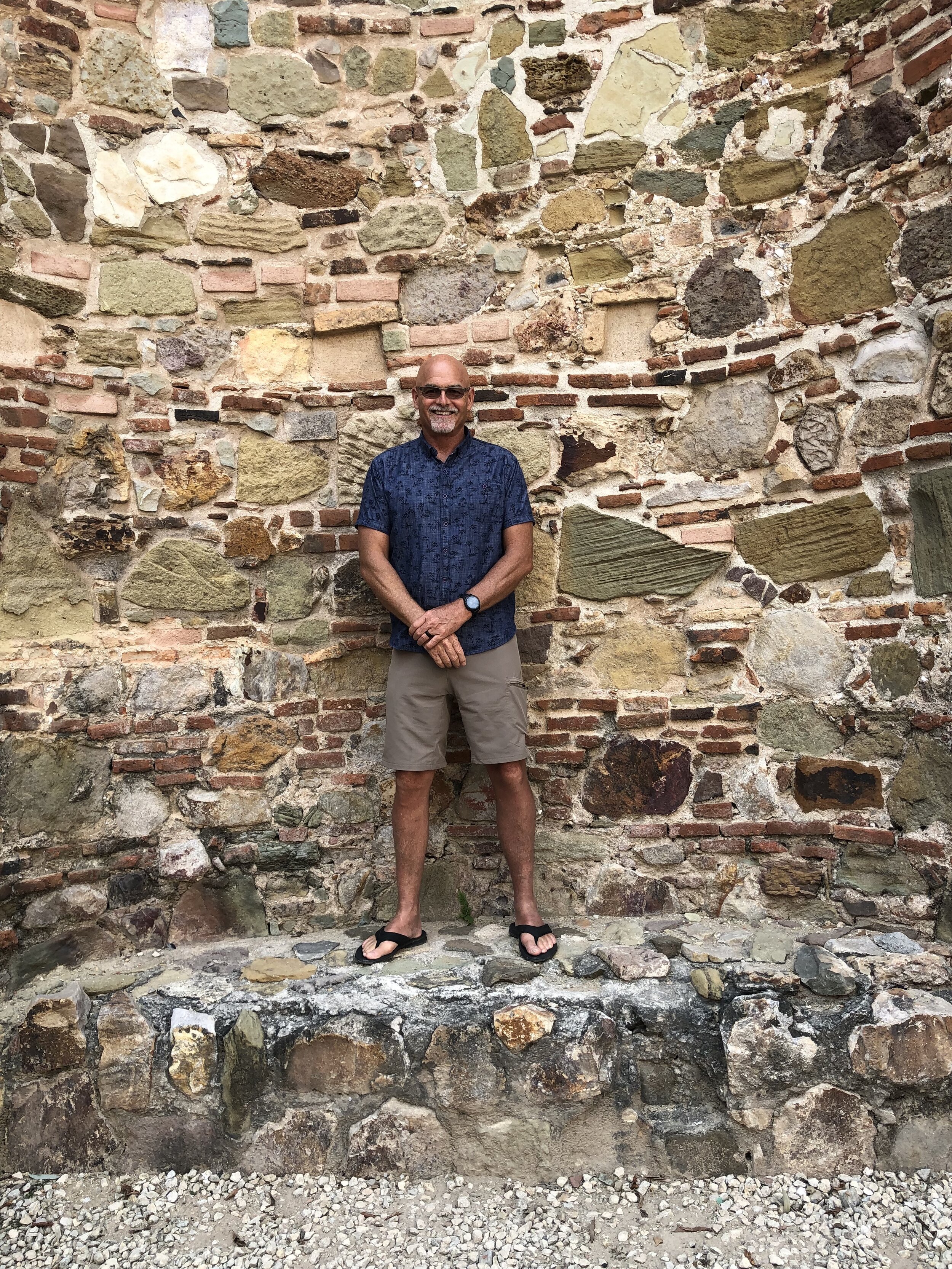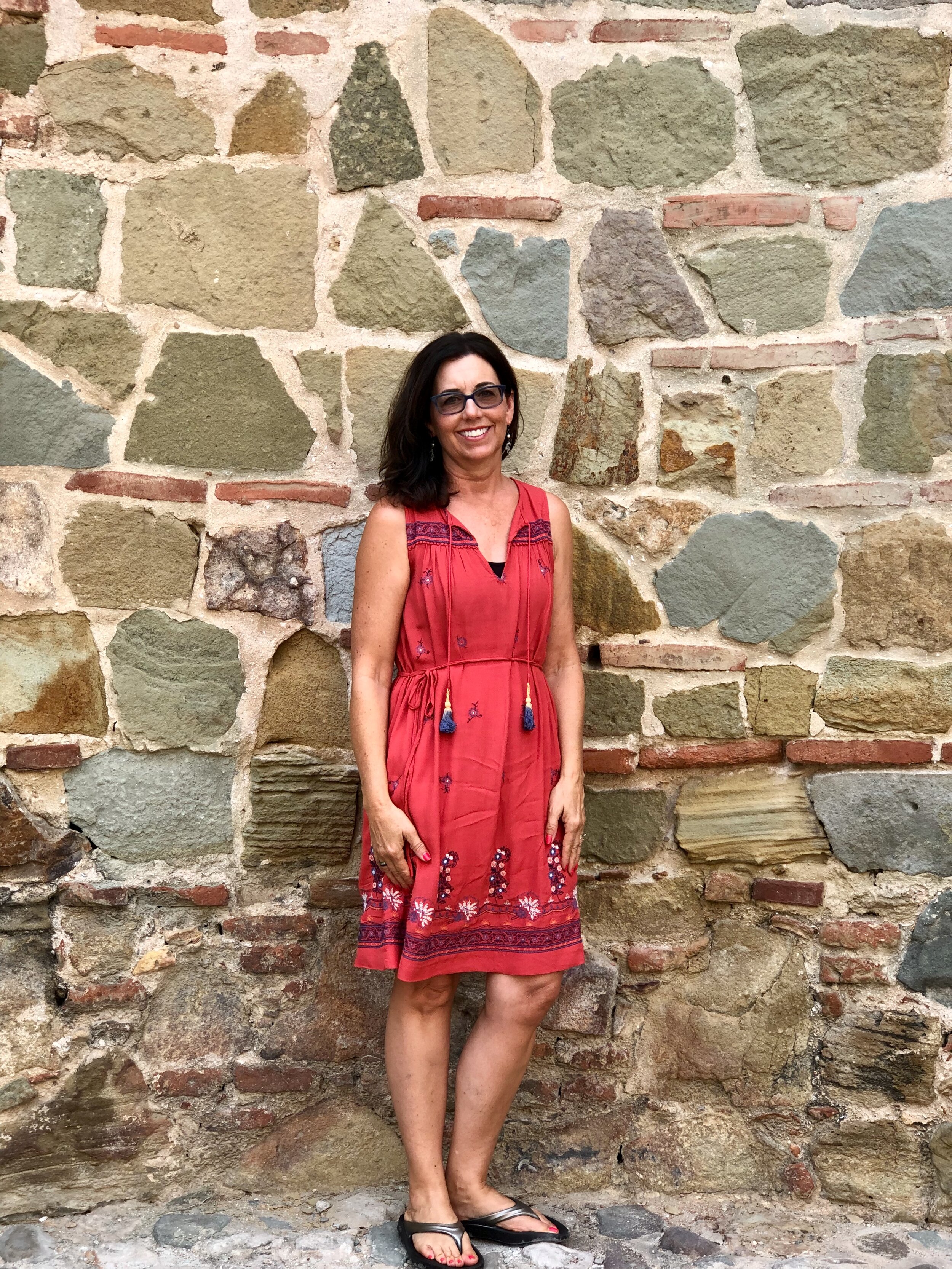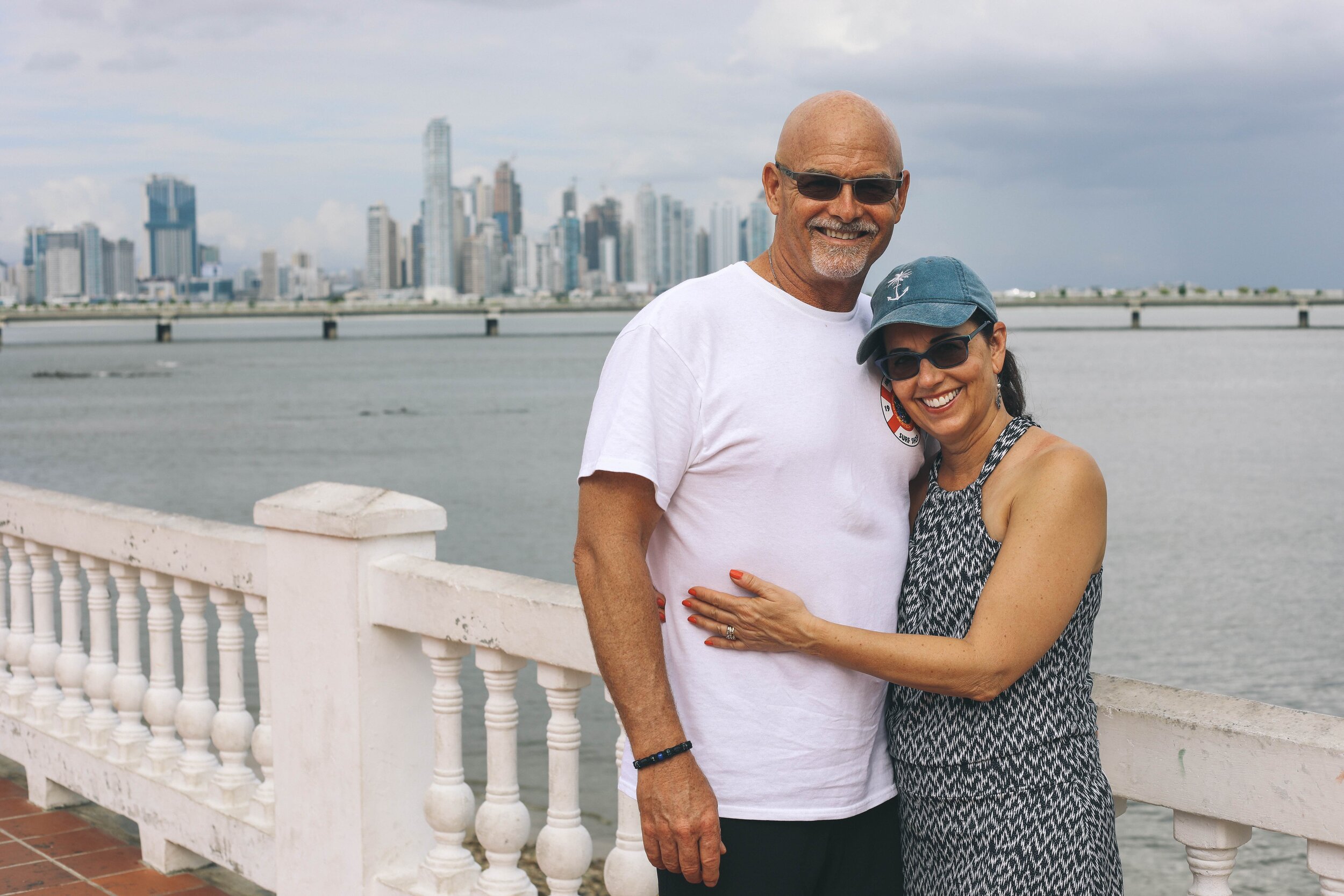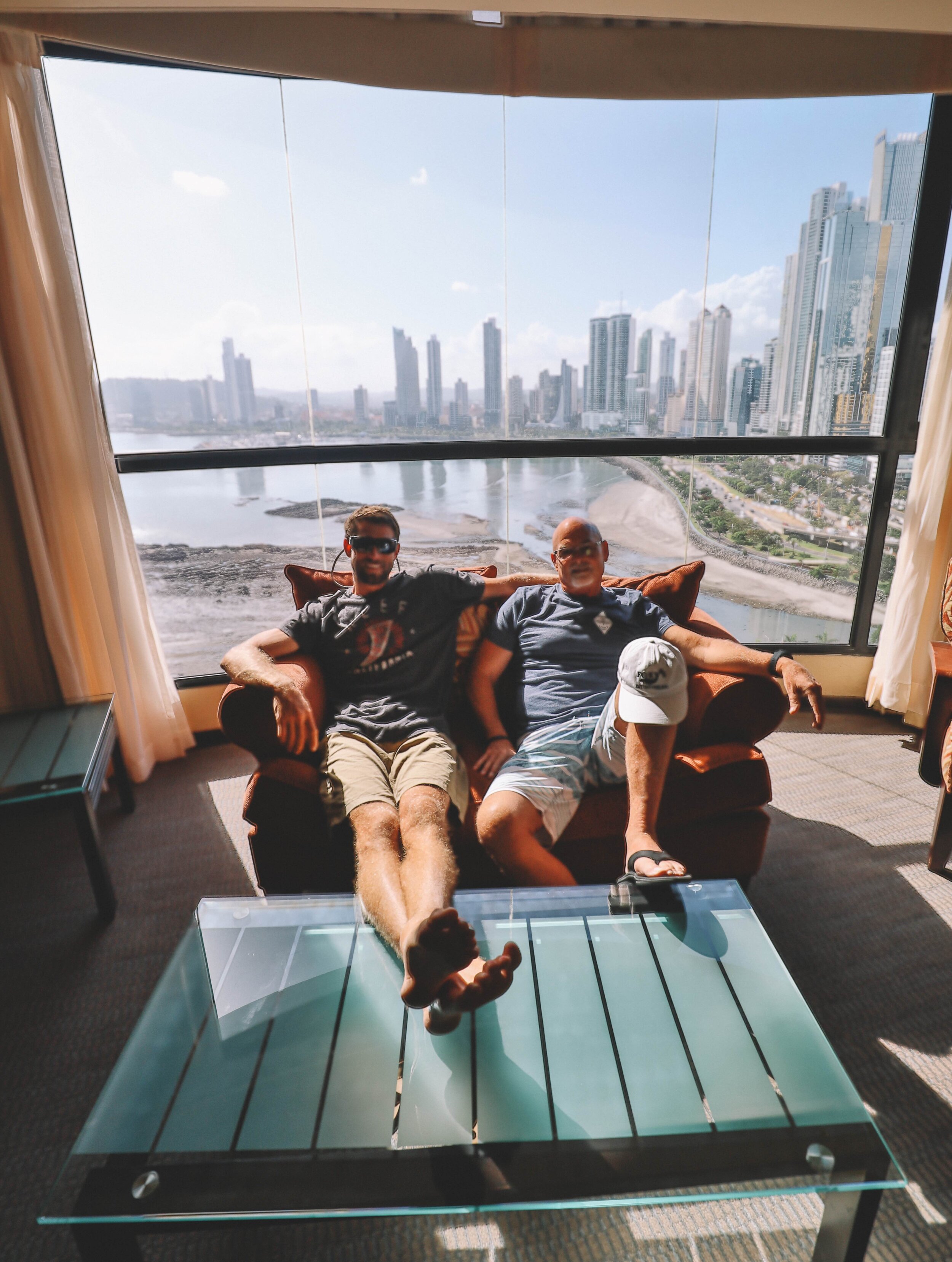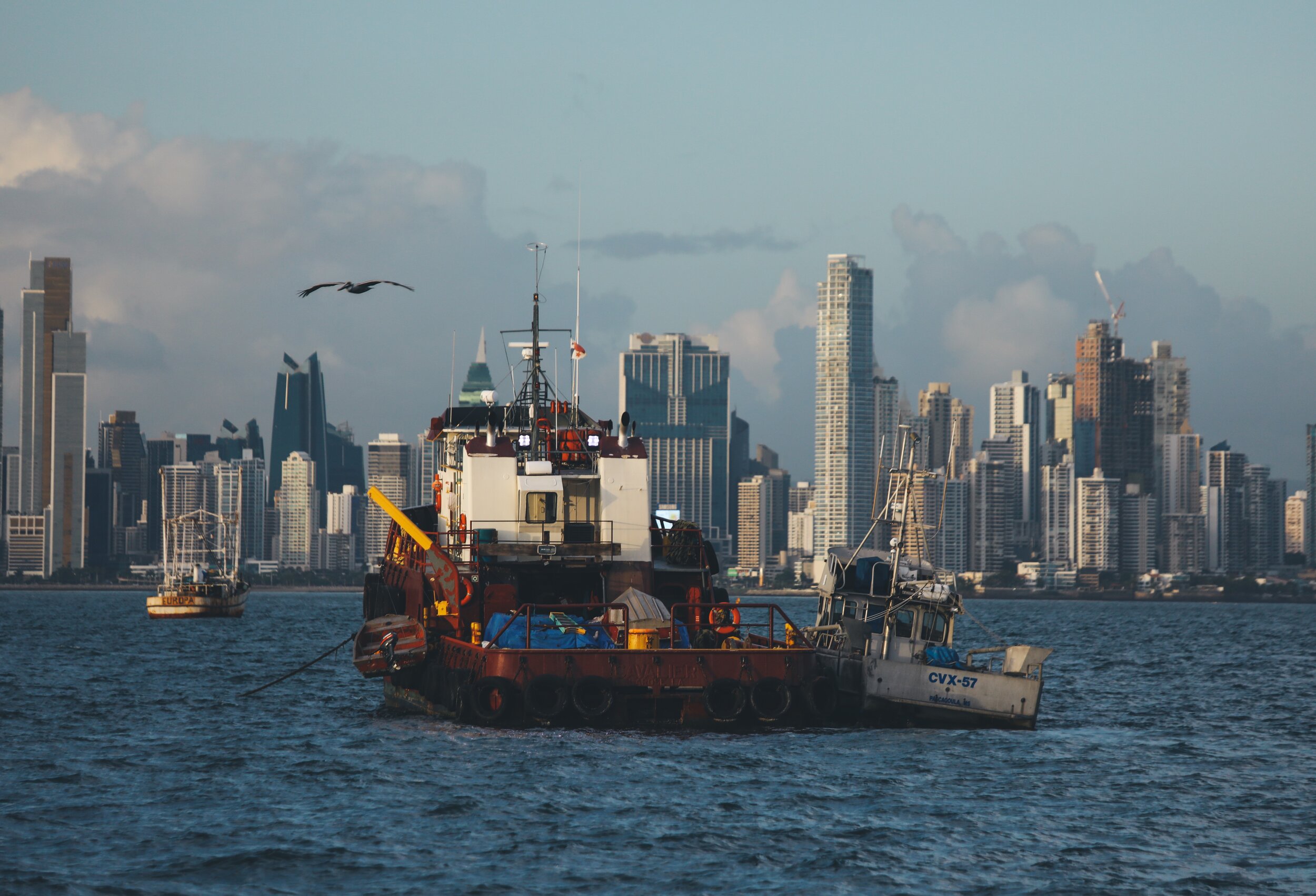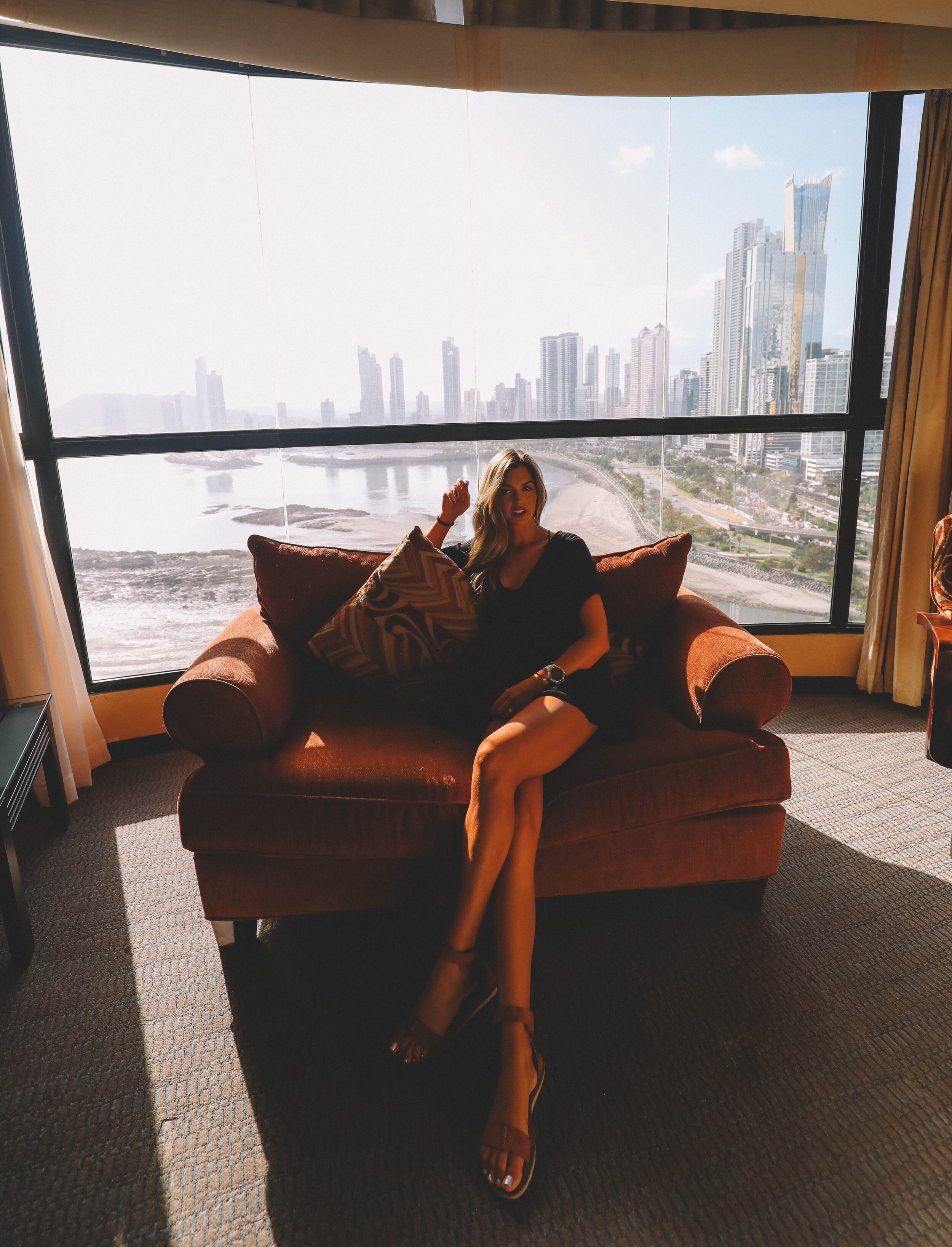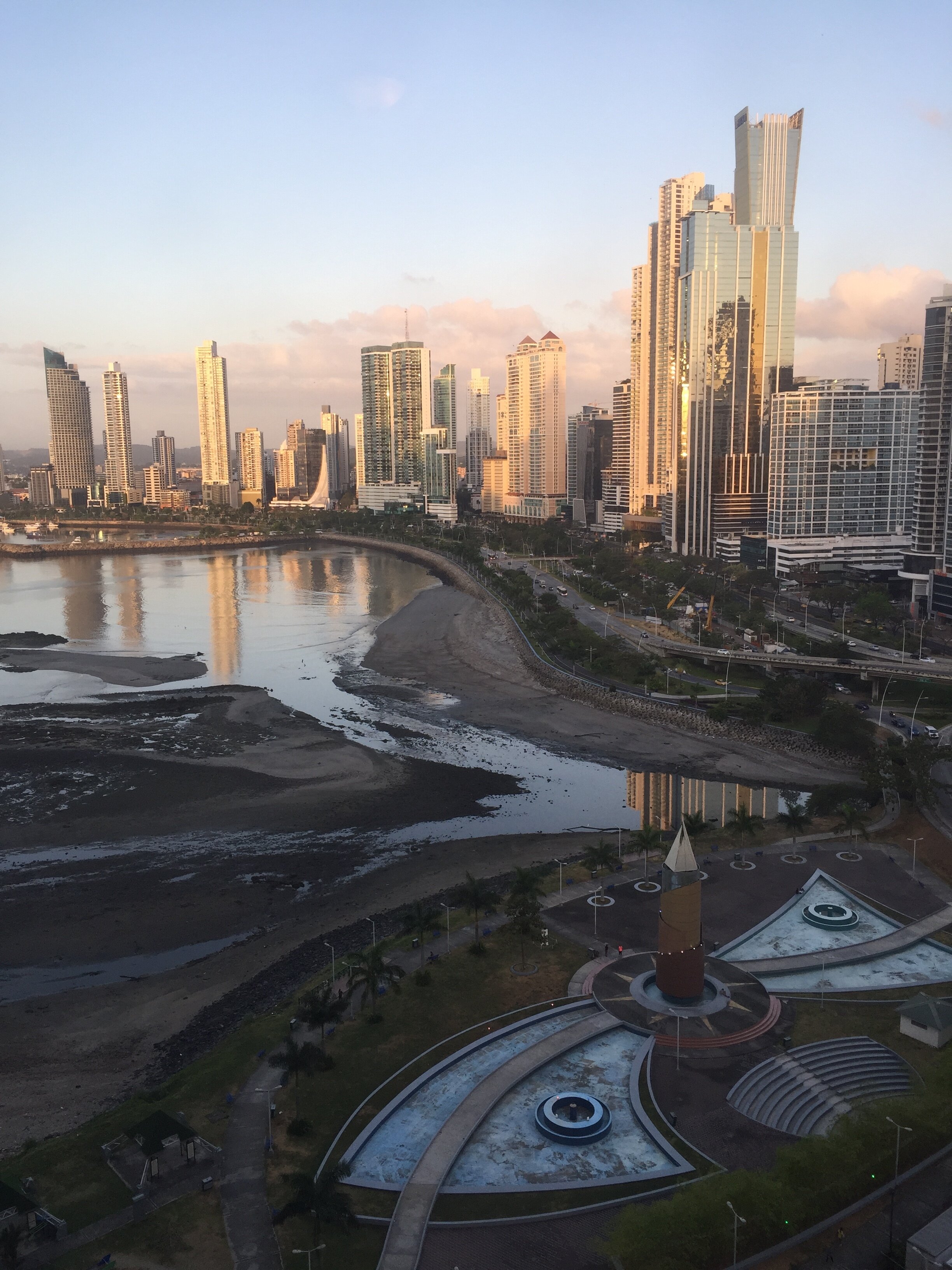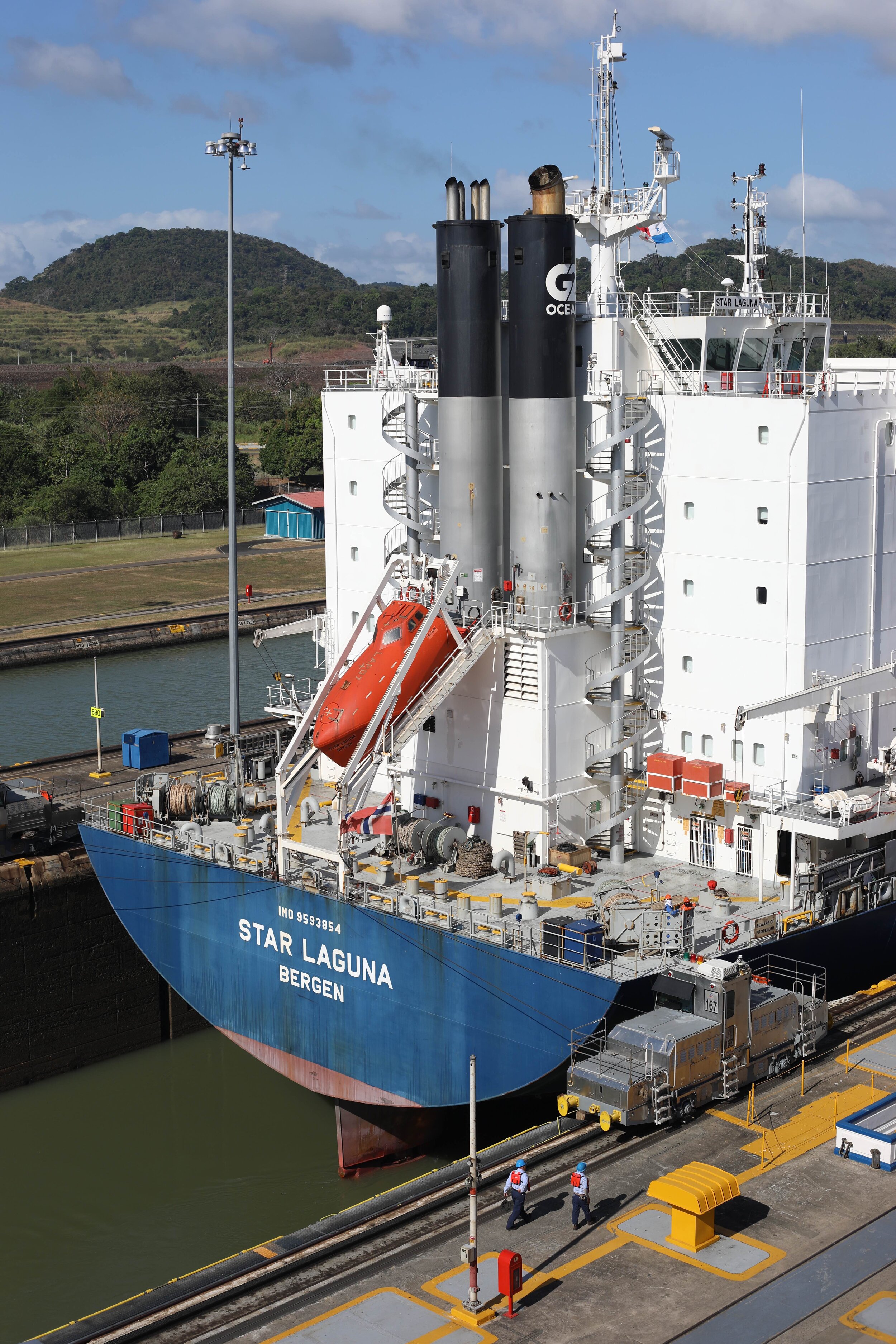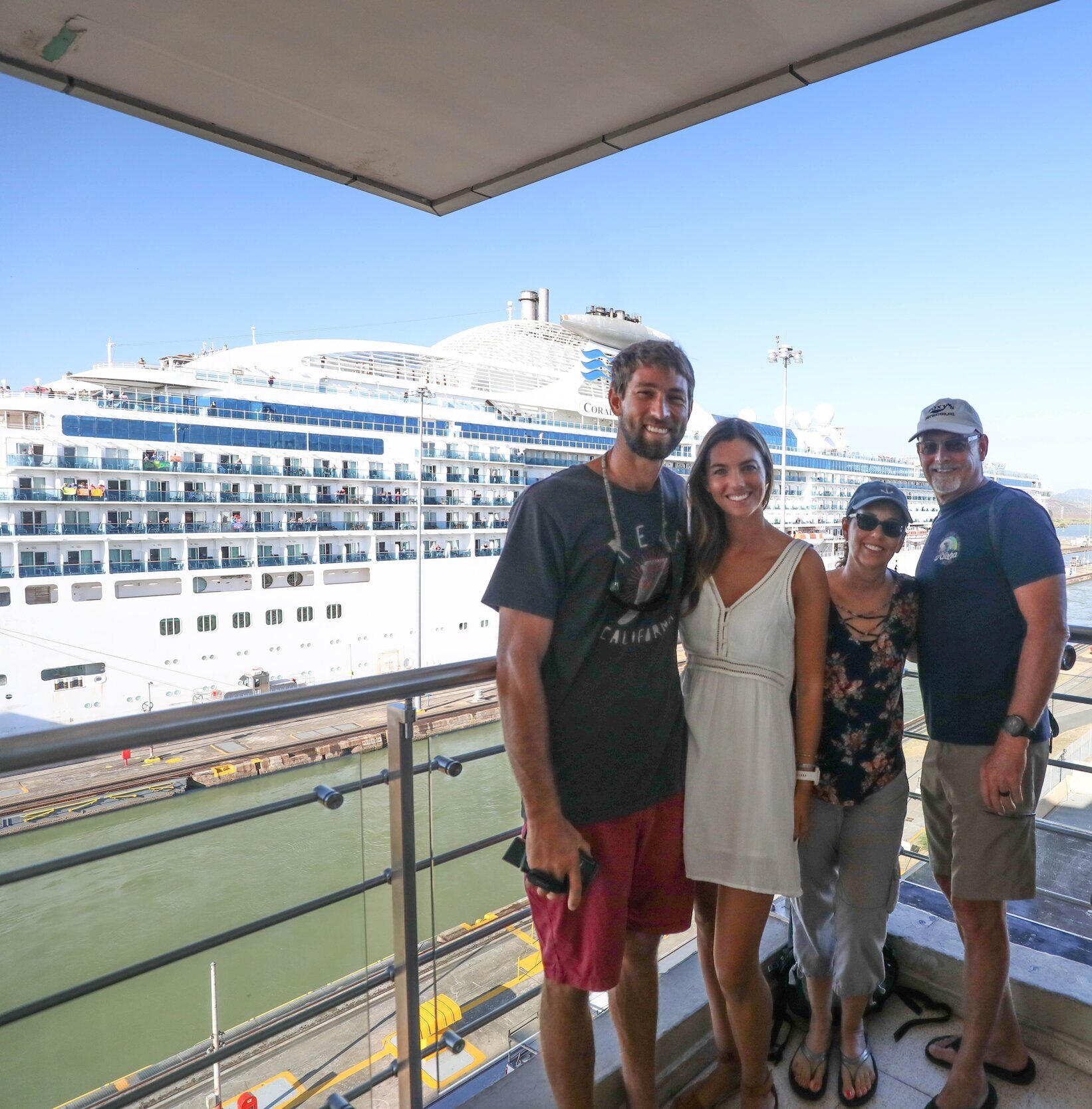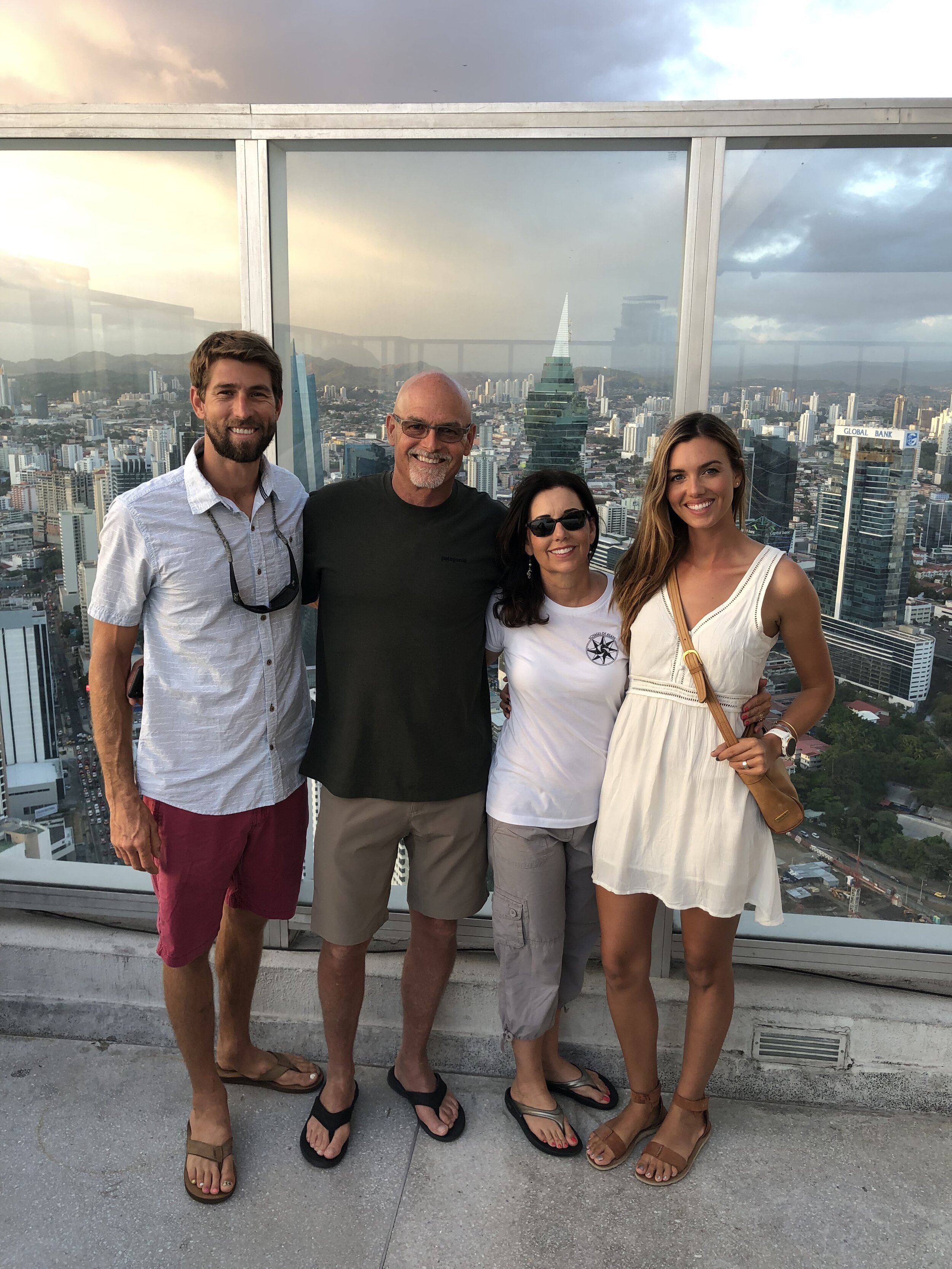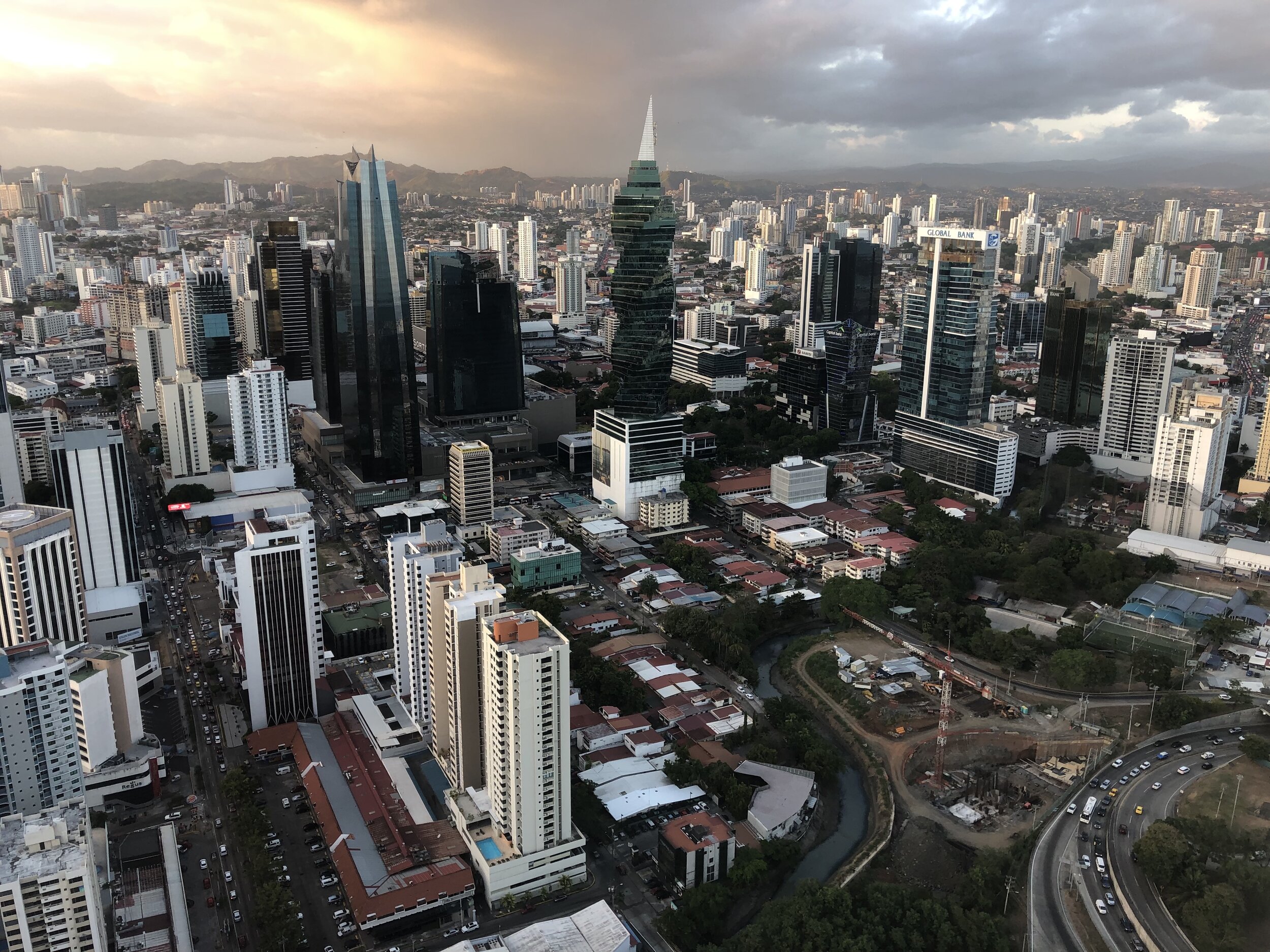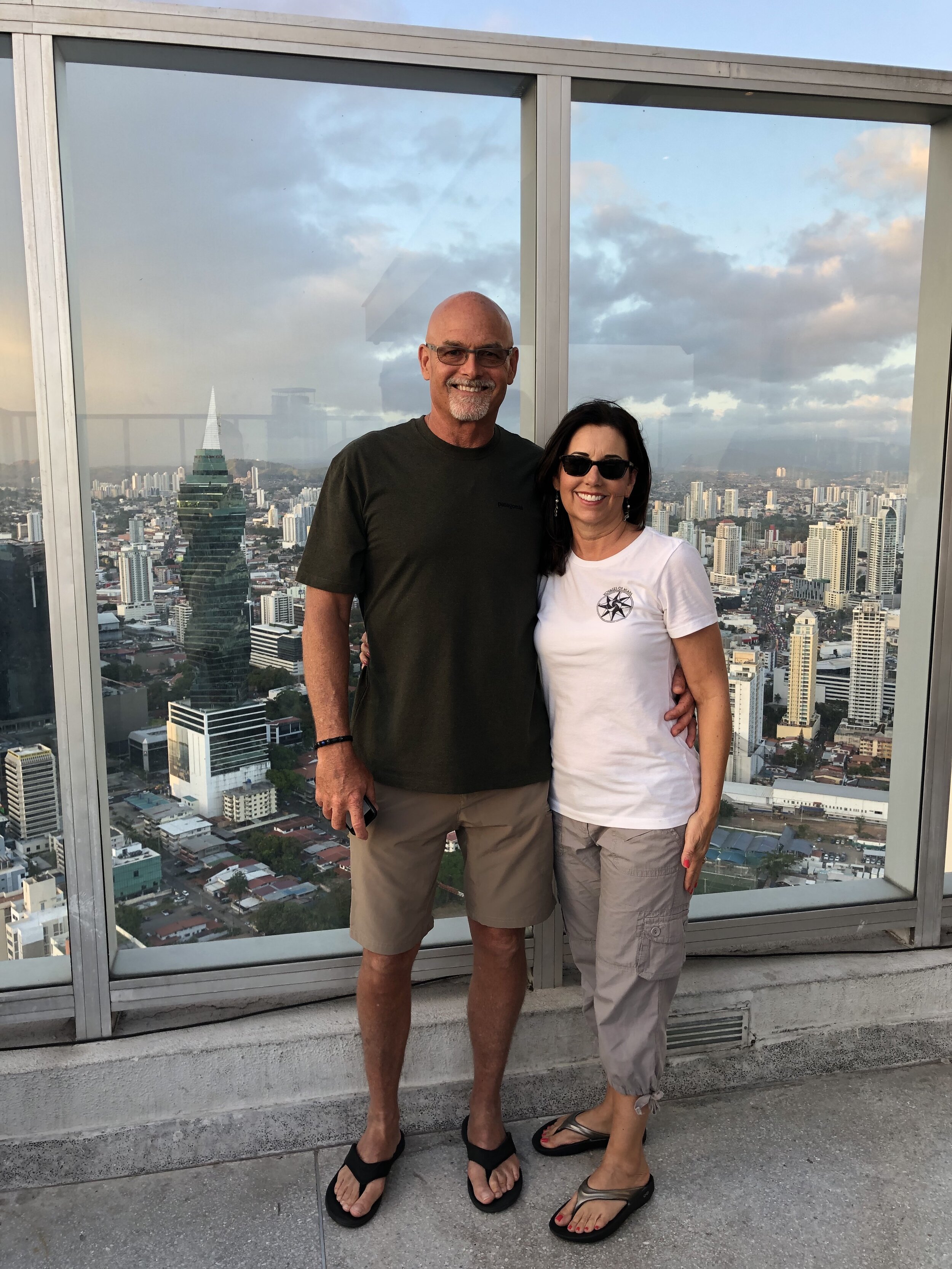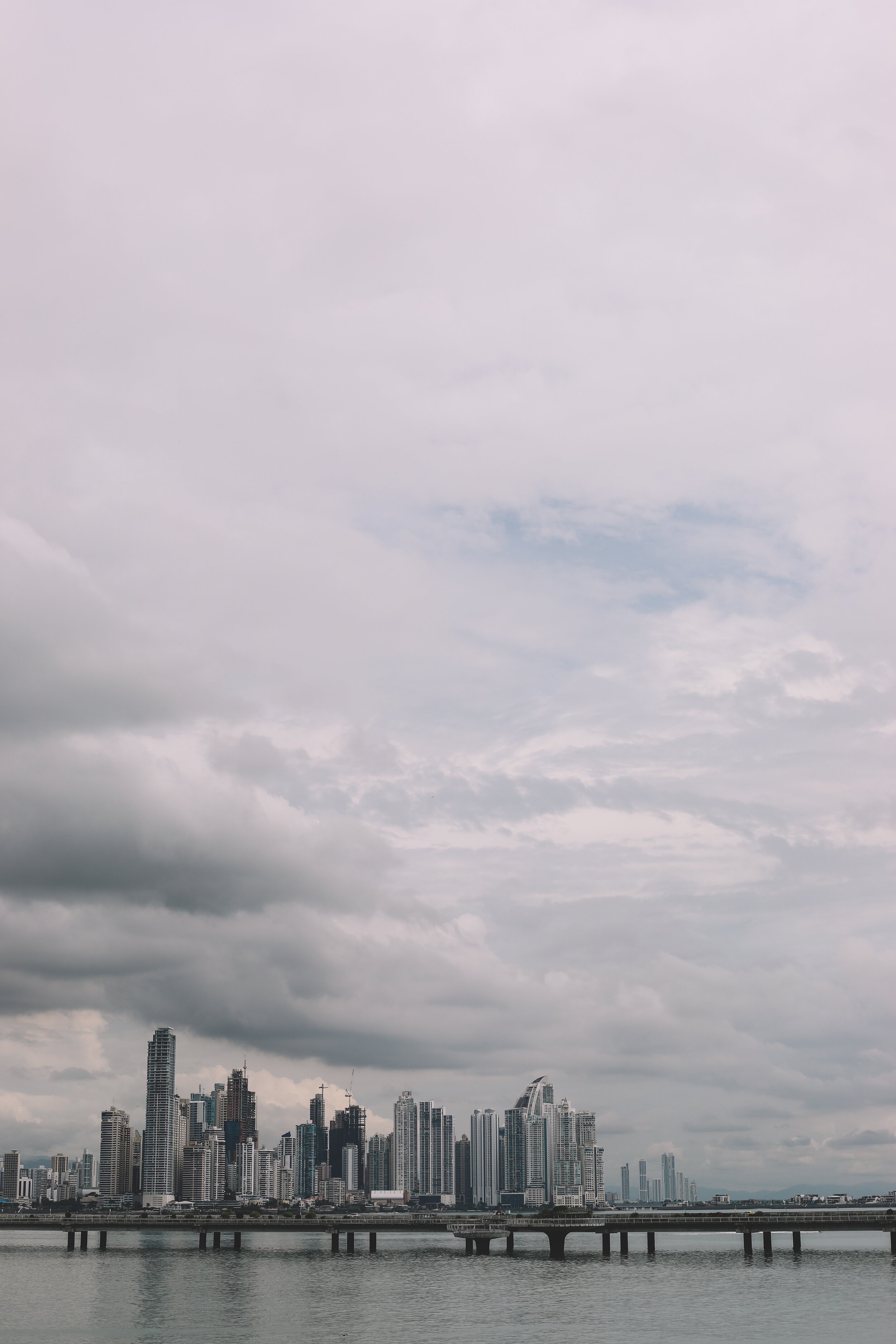Visiting an Embera Village
Rachel’s parents had flown out again to visit and this time we wanted to show them what cruising was really about for us. On their last trip out to see us we were staying in a marina in Puerto Vallarta, Mexico and they stayed in a hotel, but this time they’d be staying on Agape for their first time ever. We had so much fun taking them out sailing to Isla Bona and the Perlas Islands, fishing, snorkeling and reading together at sunset. Those moments were so special, but we also wanted to show them more than just what our life was like on the ocean. For the end of their trip we planned a more cultural experience, a surprise visit to one of Panama’s indigenous tribe’s village.
Rachel and I had already visited some traditional villages over the years around the world and had an idea of what to expect. Lynn and Jack though I’m not sure had ever seen or experienced anything like this before.
First off, a little information and history on the amazing people that make up what we call now the Embera tribe:
In the census of 1990, the population of Panama was 2,329,329 inhabitants of whom 194,166 or 11.8% were Indigenous. The republic of Panama is divided into 9 provinces and its Indigenous population is formed by 7 distinct groups which are the Kuna, Embera, Waounan, Ngobe, Bugle, Nassau, and Terribe people. The first Comarca Indigena, official Indigenous territory in Panama was created in 1938 in the San Blas archipelago by the Kuna people. In the province of Darien, the Embera and Waounan people joined forces and organized themselves politically to create the Comarca Embera-Waounan in 1983.
Historically, these people are from what is now Columbia, but when the Spanish arrived the Embera people moved north, deep into the river systems of modern day Panama, pushing the people groups currently living in the area up and out into the San Blas and Caribbean coastline (now known at the Kuna).
The word Embera can actually mean: person, man, or indigenous person, depending on the context. The people we now know by this name were originally called Chocó or Katío Indians.
The Embera currently number around thirty three thousand in Panama and more in Columbia.
Traditionally these people lived in small family groups along river systems, but in the 1950/60’s with the expansion of trade, the construction of the PanAmerican highway and the influence of missionaries, life changed rapidly for the Embera people. Today the Embera are under the rule of the Panamanian government but are allowed some leeway and semblance of a self governed people. In addition they have been given an area of (4383.5 km²) land that is protected and set aside for them to live on without fear of continued outside influence or encroachment from Latino cattle farmers.
They are a traditionally a democratic society, in which men and women are thought to be equal, and the small tribal communities elect a representative in a democratic fashion. Two people who have proven themselves to be leaders in the community and have an in-depth knowledge of their history, culture and their traditions are brought forward. When they are brought before the village they will turn their backs to the people and their tribesmen will slowly line up in single file resting their hand on the back of the person they vote for. This way of voting keeps the votes fairly anonymous to the candidates. A woman can be voted chief but it is usually very rare.
They live in raised huts above ground and while people here today still choose to live in these traditional looking houses, on closer inspection they have adopted some of the niceties of modern day. This is not a bad thing or something we are against, if given the option to use propane to cook instead of an open fire or if the ability to have light after dark presented itself, I think anyone would jump at the chance.
In many other aspects of their life they choose to try to live as traditionally as possible. The women still weave elegant baskets from the fibers of the nahuala plant and chunga palm which grow in the Darién Rainforest of Panamá. Each beautiful basket is a unique example of tribal folk art and the vibrant colors come from natural dyes made from flowers, fruits, roots and dirt. The men hand carve wood and Tagua nuts into small sculptures.
The village we visited is on protected land and the tribe has made concessions to continue living there. Because it’s a reserve, they are unable to hunt jungle animals like monkeys and tapirs like they have done for hundreds of years, but they are still allowed to fish the river. They are unable to cut down sections of jungle to grow their own crops so they have to earn some money to purchase food, so they invite travelers to visit their village and buy some of their traditional artisan goods to earn money to buy staples like rice, corn and beans in the city. They traditionally made their own clothes but have had to adopt making things from colorful beads purchased in the city instead, as the plants they previously made their clothes from are now protected. Women are normally bare chested but in villages most frequented by tourists they have begun covering their breasts.
We chose to visit a village outside of Panama City and to support one of these communities; it was not only educational but also a beautiful outing into a truly remote area. At the end of the tour Rachel had a great conversation with the chief asking about how life has changed, if they like tours coming into the village or if they would like to go back to how things use to be. In a wise statement the gentleman conveyed a longing for simpler times and life without tourists walking through the village, but he also knows that this is not likely to change as this concession has given them the ability to continue living on their land. Without visits from people like us they would have little income in order to purchase the food they need to continue living out here. There is a pressing urgency to find a balance and separation from being a tourist stop, exposed to western influence and find a more hidden, traditional way of life that can remain private and un-interfered with.
From the Embera village we headed back to Panama City with new eyes, seeing the sharp contrast between the two worlds. From the cool, clean air, walking barefoot through pristine rainforest, to a bustling city, filled with smog and trash lined streets. The dichotomy between the two worlds was astounding! We went from the tallest thing on the horizon being the forest to a skyline full of towering buildings.
We are normally not fond of big cities but Panama City is a jungle experience of its own. We might prefer nature but heading into busy city life offers things the jungle and Agape cannot, and on this adventure into the city Rachel’s parents offered to put us up in a hotel for a few days. As full time cruisers there are a few things we find hotels to have that we love… long hot showers, WiFi, a big bed and air conditioning! With Rachel’s parents treating us to a beautiful hotel room right on the water we could not wait to stretch our legs and take advantage of the perks of city life.
Panama City has a long list of tourist stops that are well worth a visit. First and foremost, the reason for the city, the Panama Canal! This is an amazing engineering feat and one that deserves a day to appreciate. The Mira Flores visitors center is the perfect place to not only see the locks in action but to learn about the history of the canal and the extraordinary cost of resources and the lives it took to complete.
Another must see is Casco Viejo, Spanish for Old Town. The truly original Panama City was founded in 1519 and lasted one hundred and fifty-two years, when in 1671, Governor Juan Perez de Guzman had it set on fire before the pirate Henry Morgan could attack and loot the city. Three years later in 1673 what is now known as Old Town was built on the peninsula completely isolated by the sea, where a defensive system of walls was built to protect the new city. Today this place preserves its first institutions and buildings of the old city of Panama. As you walk down the cobbled stone streets history is evident in the faces of the buildings and protected historical sites.
This was a great close to Jack and Lynn’s trip to Panama and I am so glad that they made it happen!!! We can’t wait until their next visit somewhere out in the South Pacific!!!



